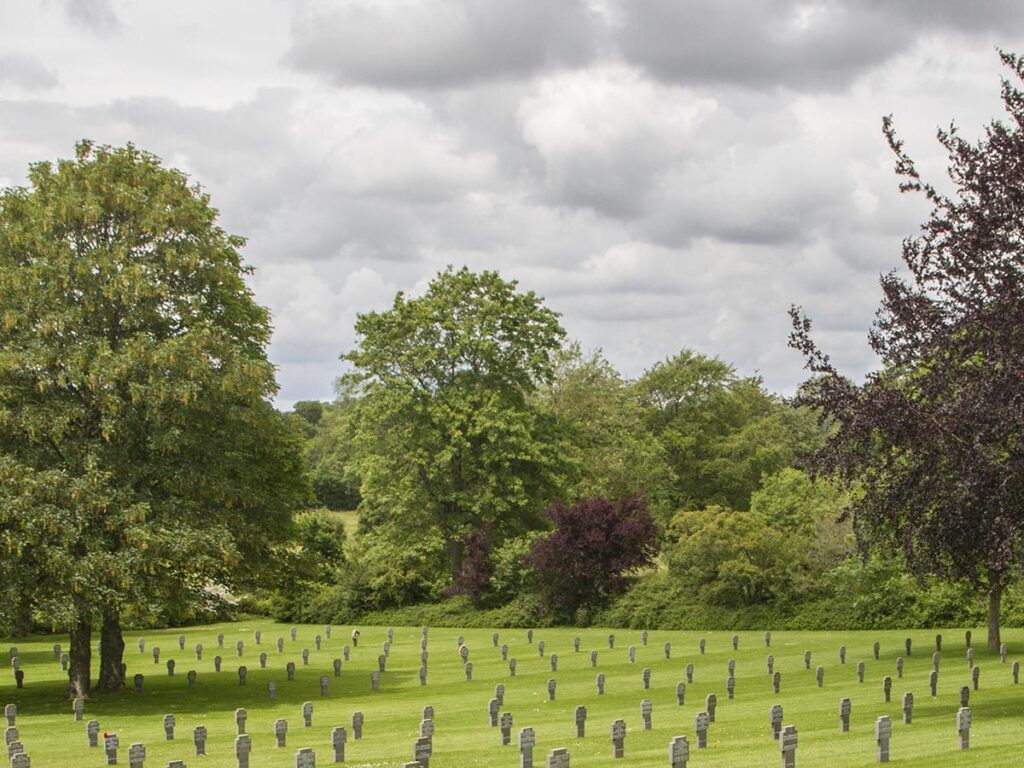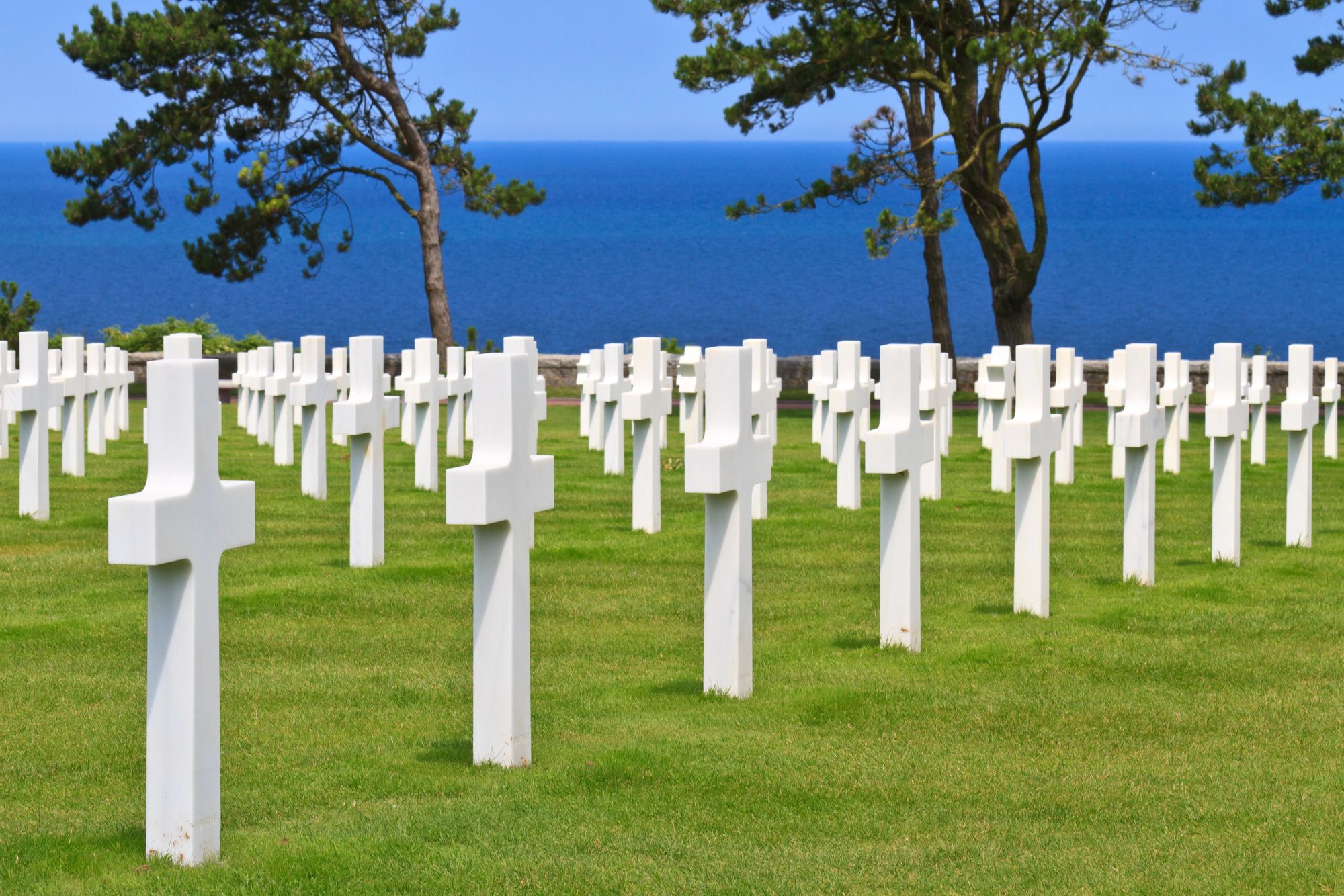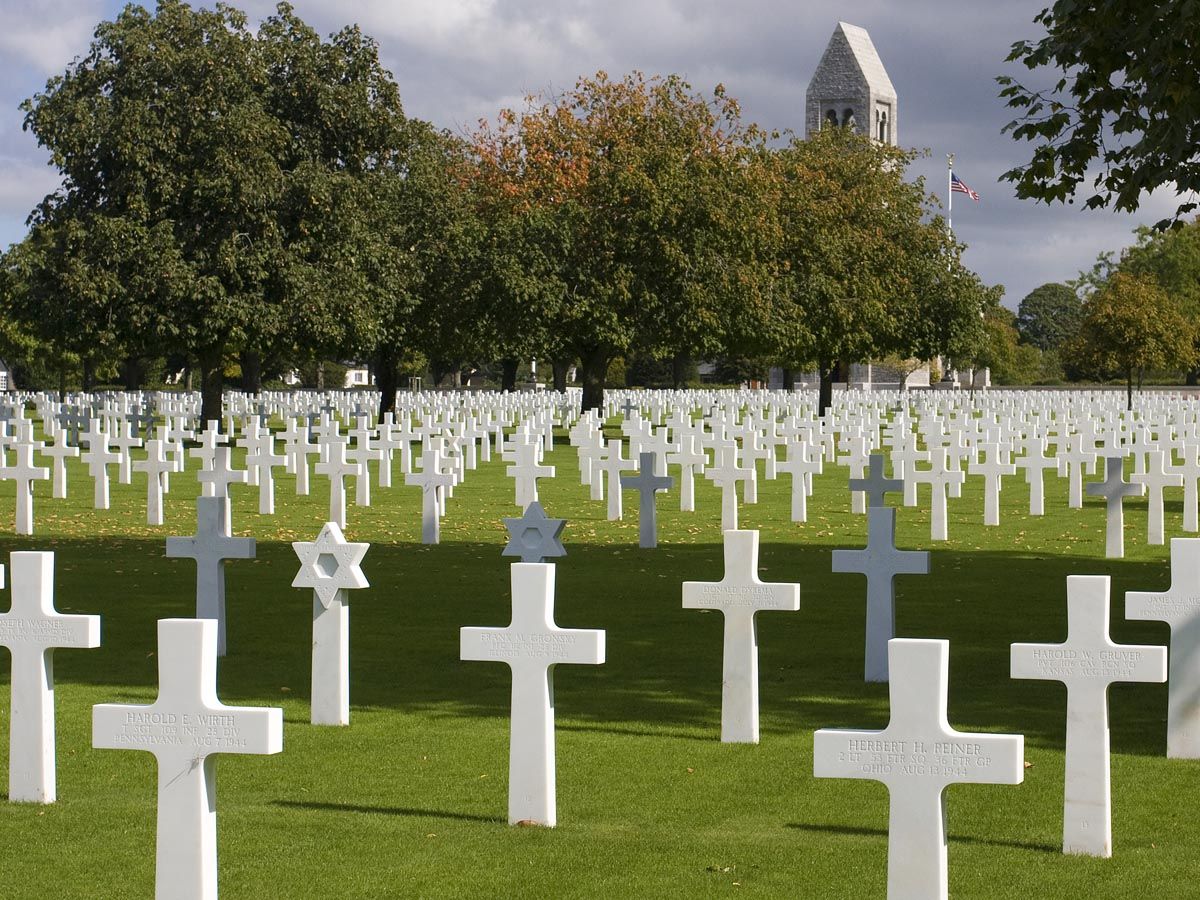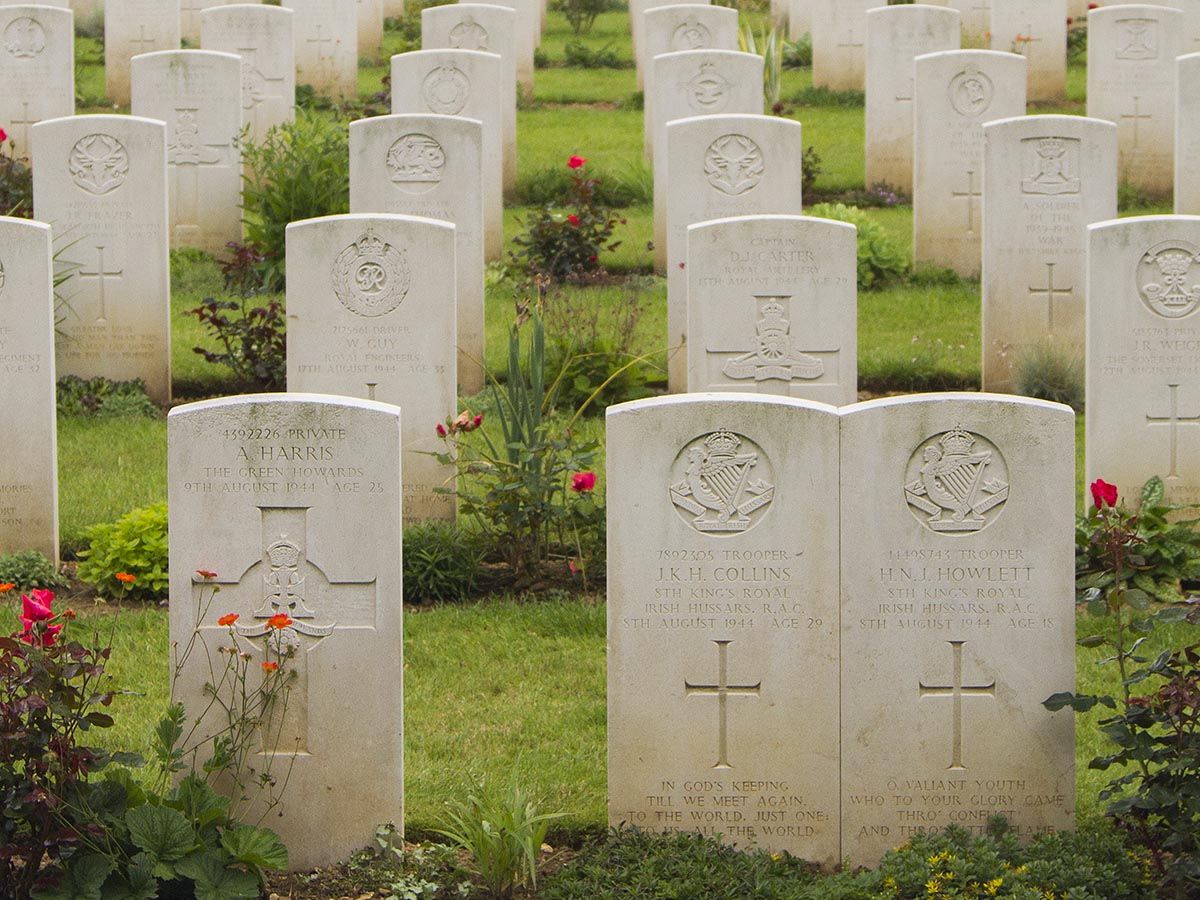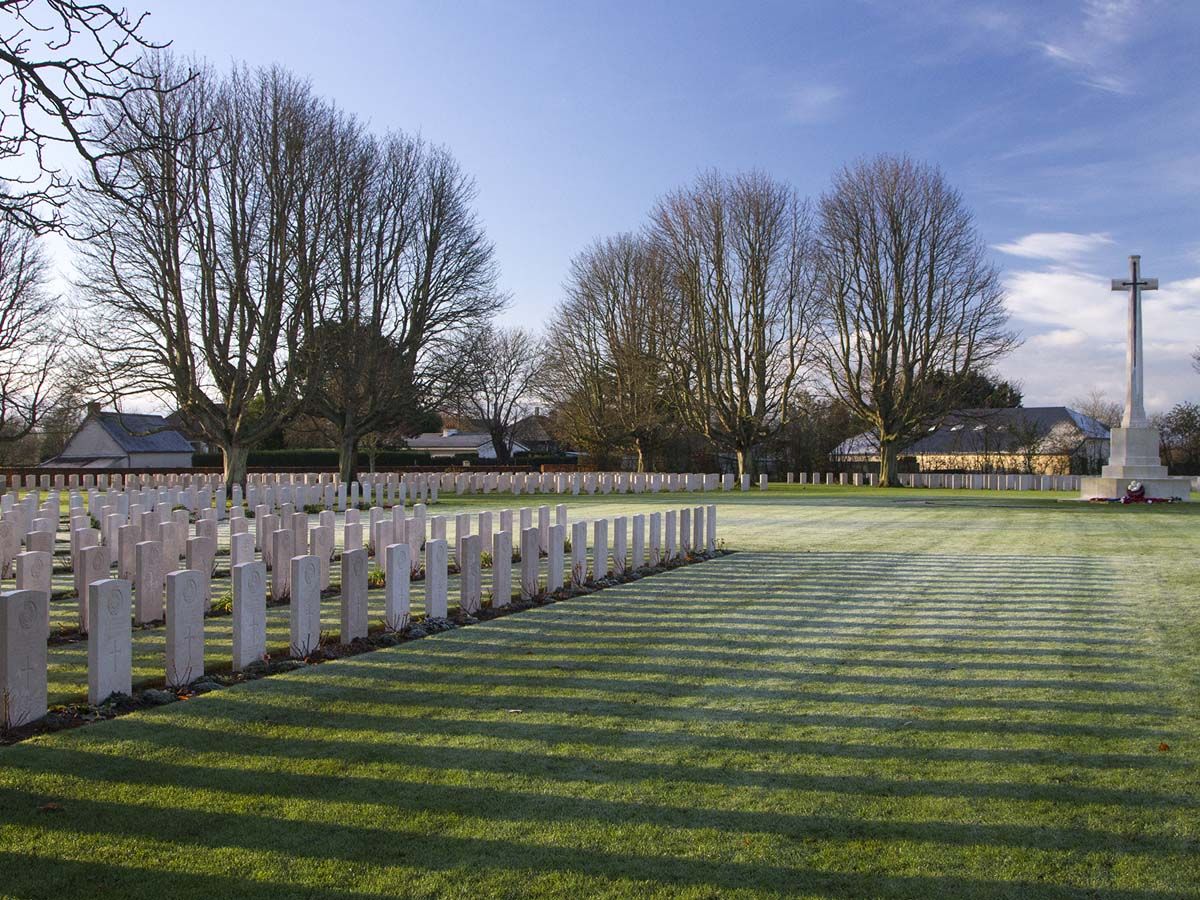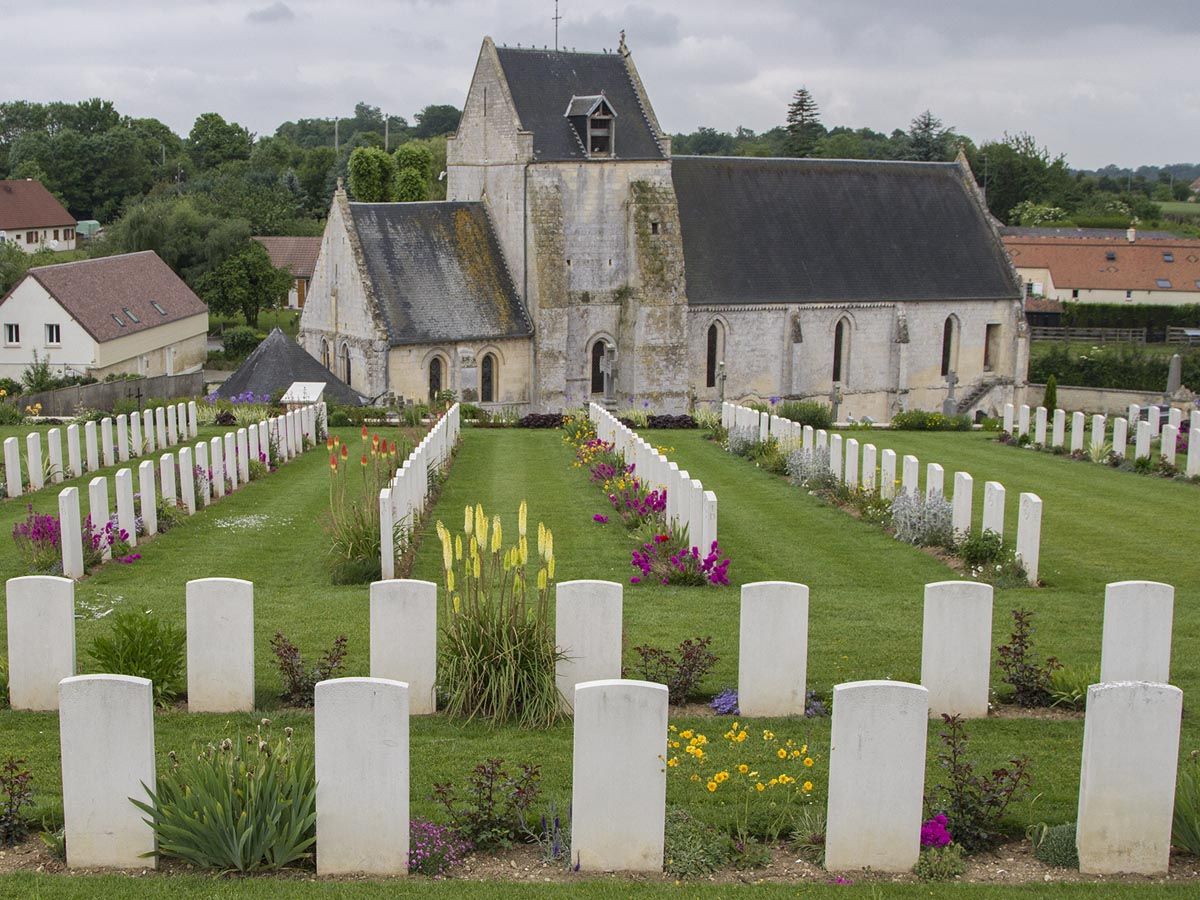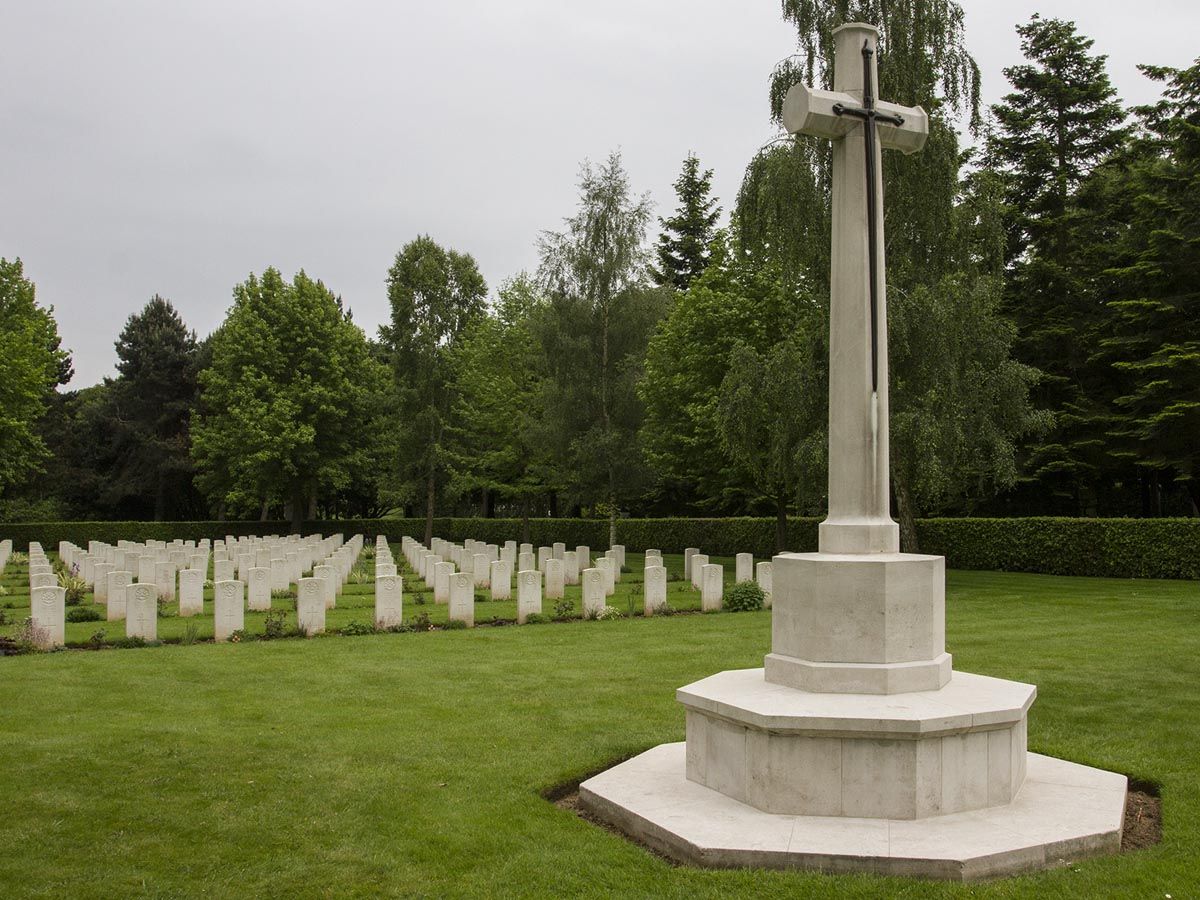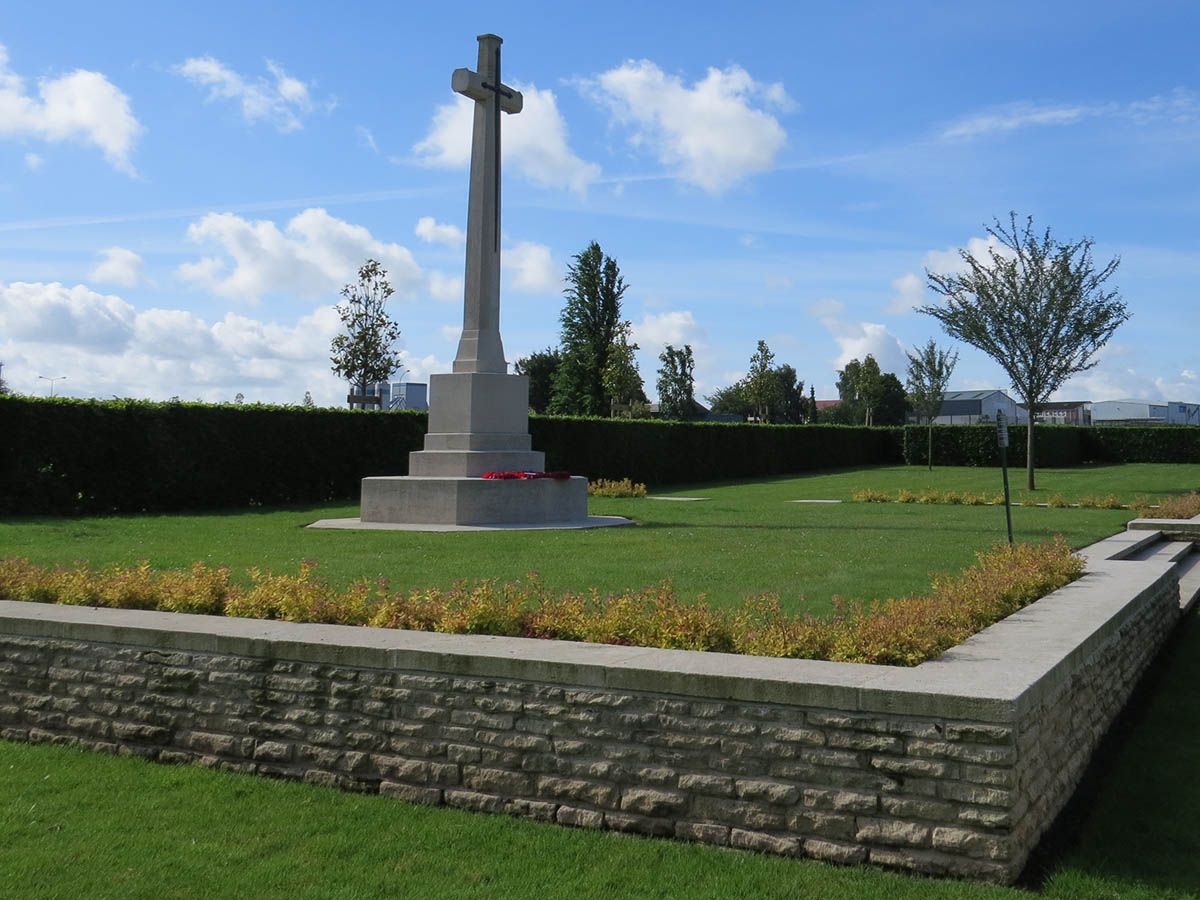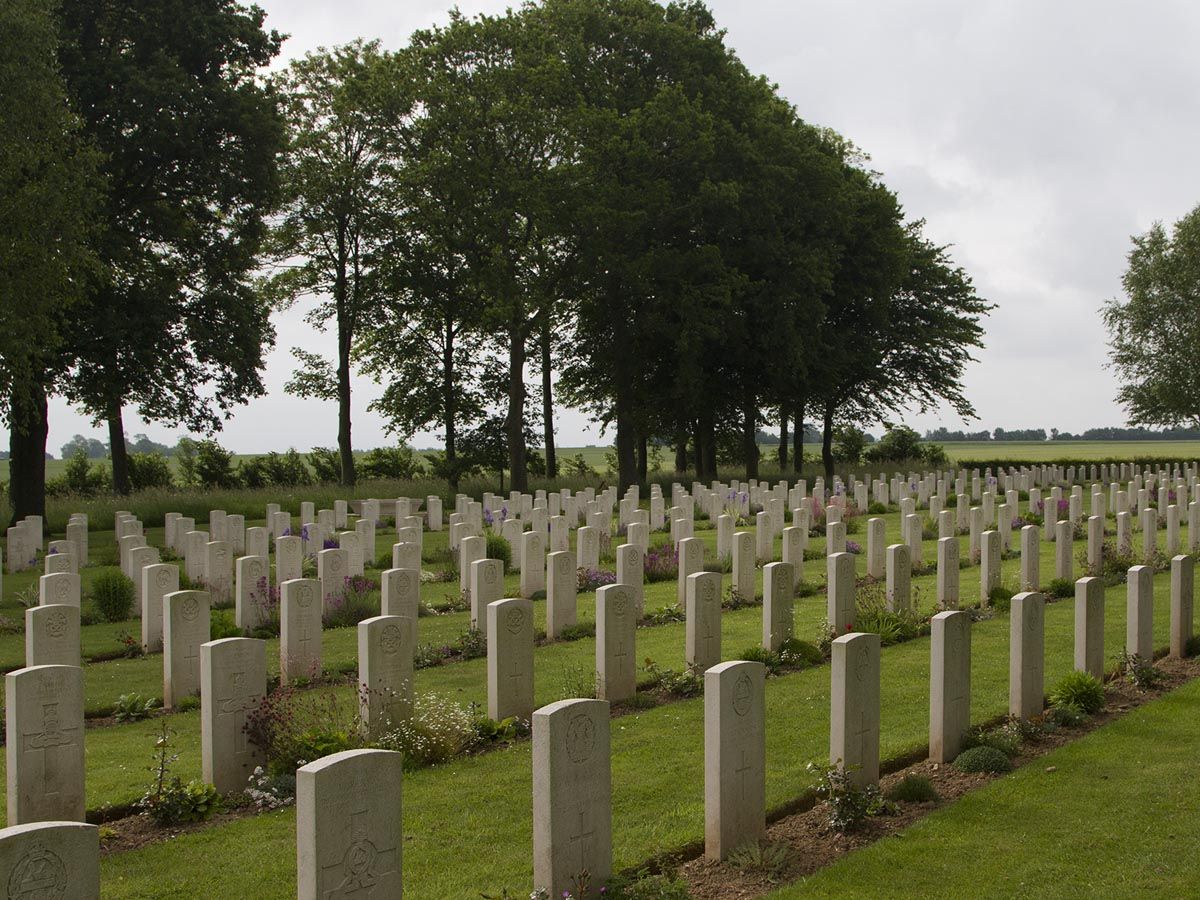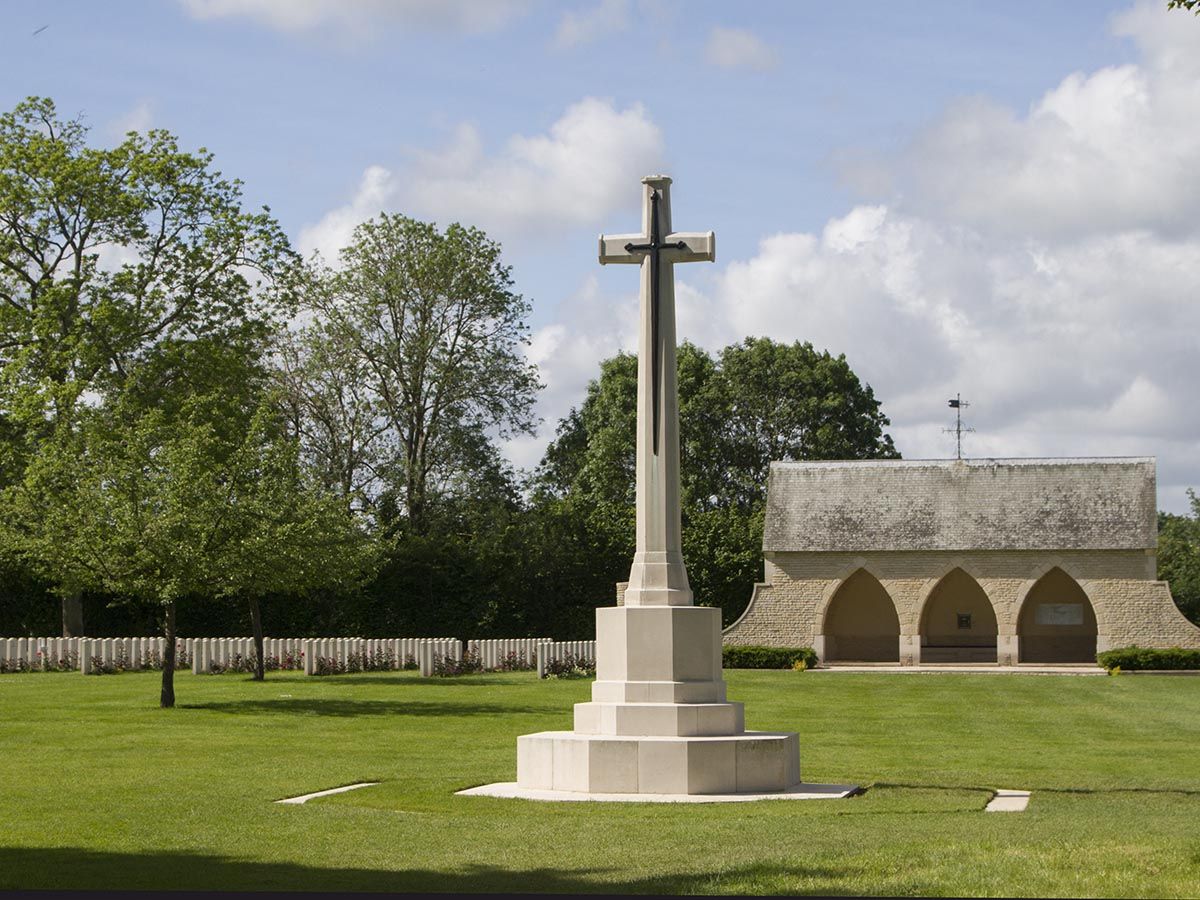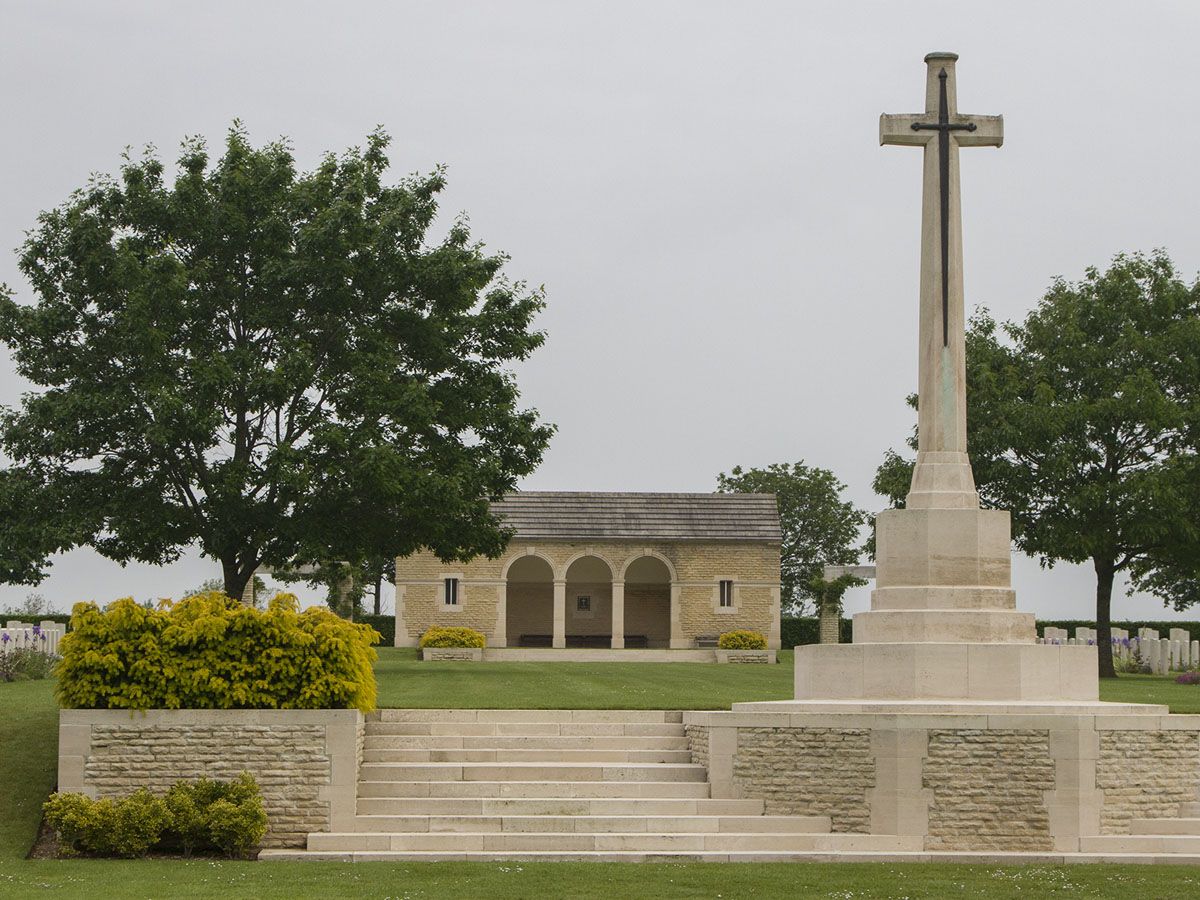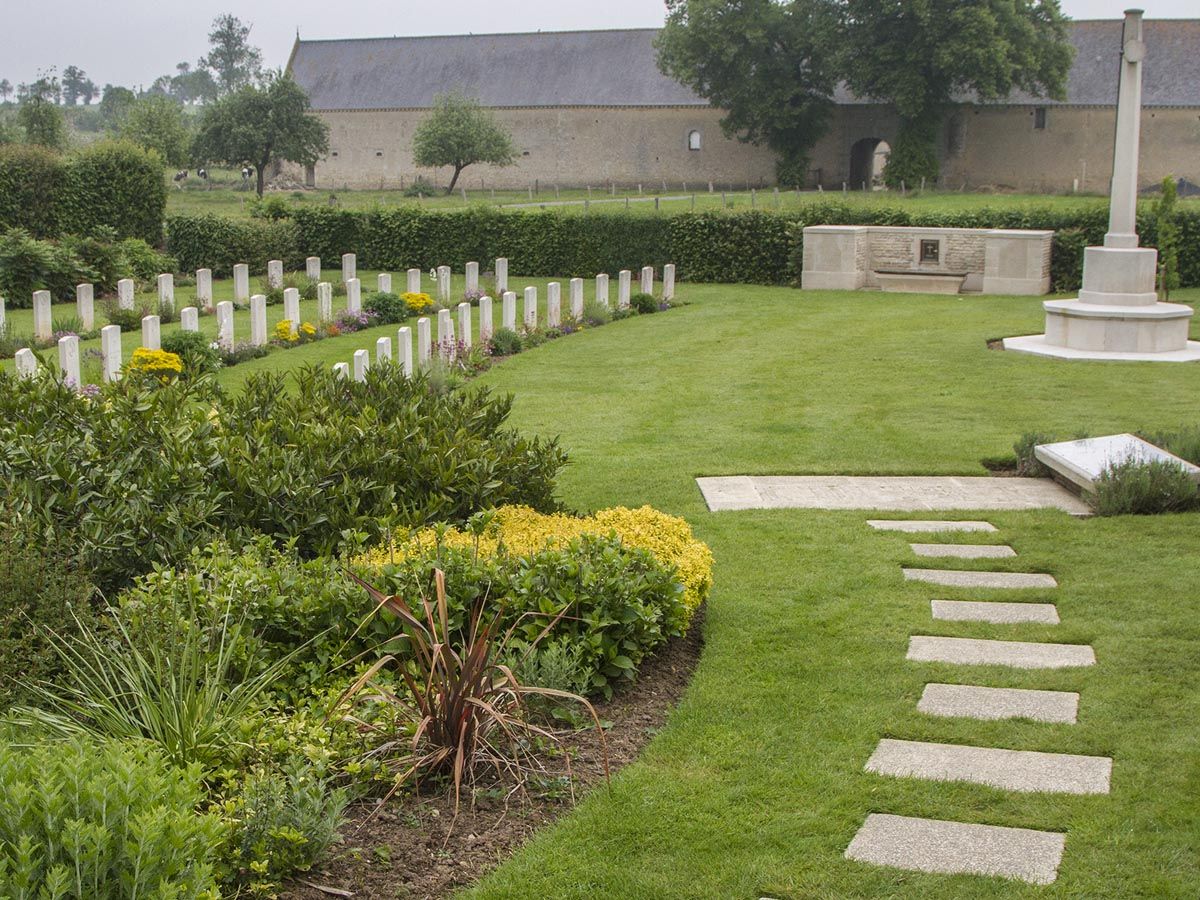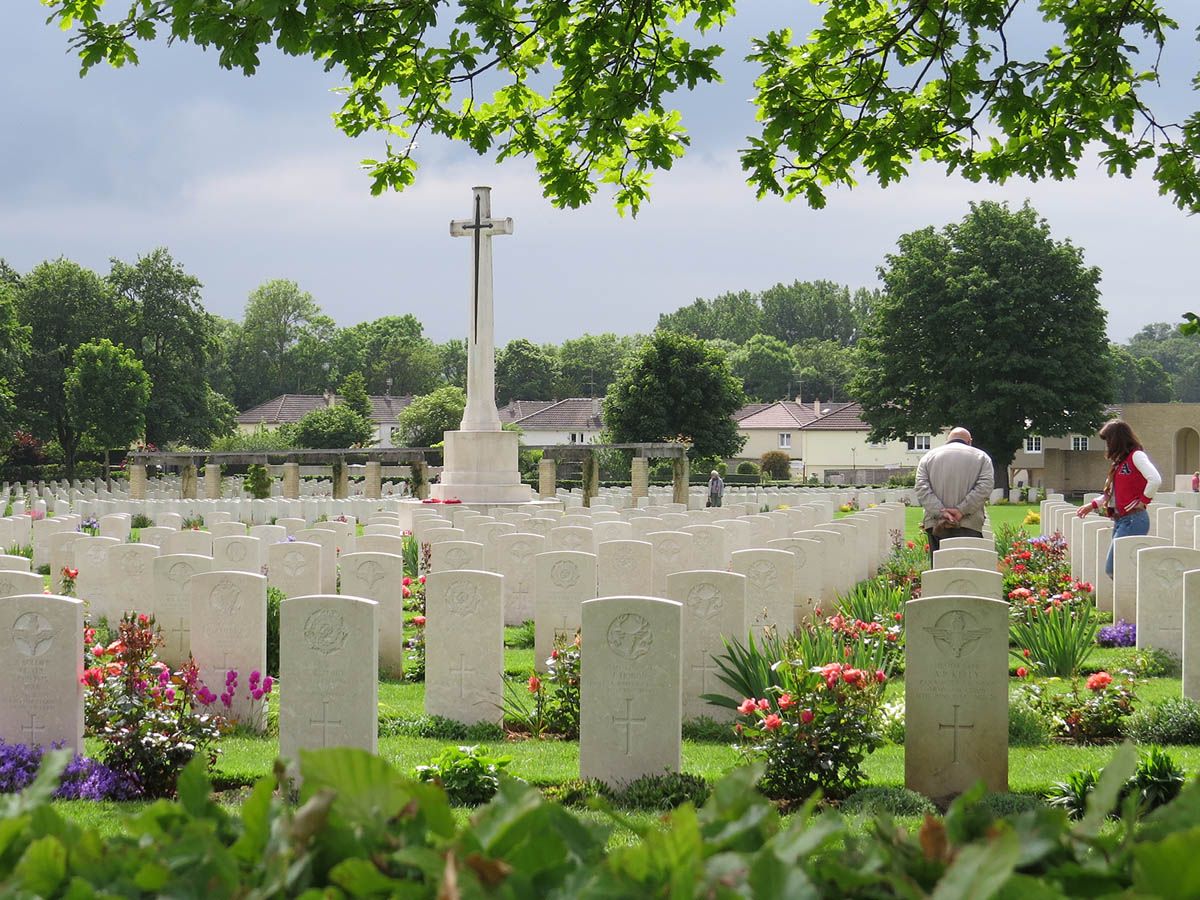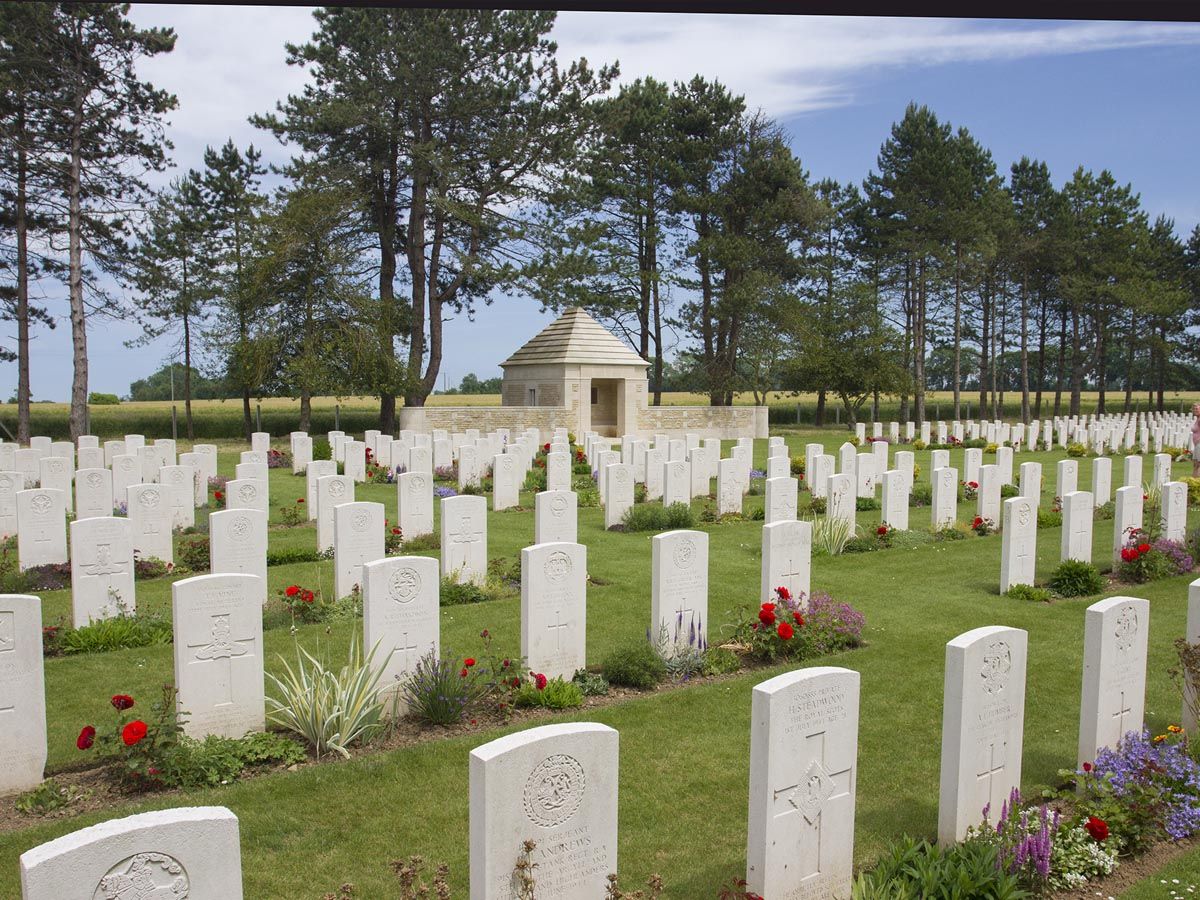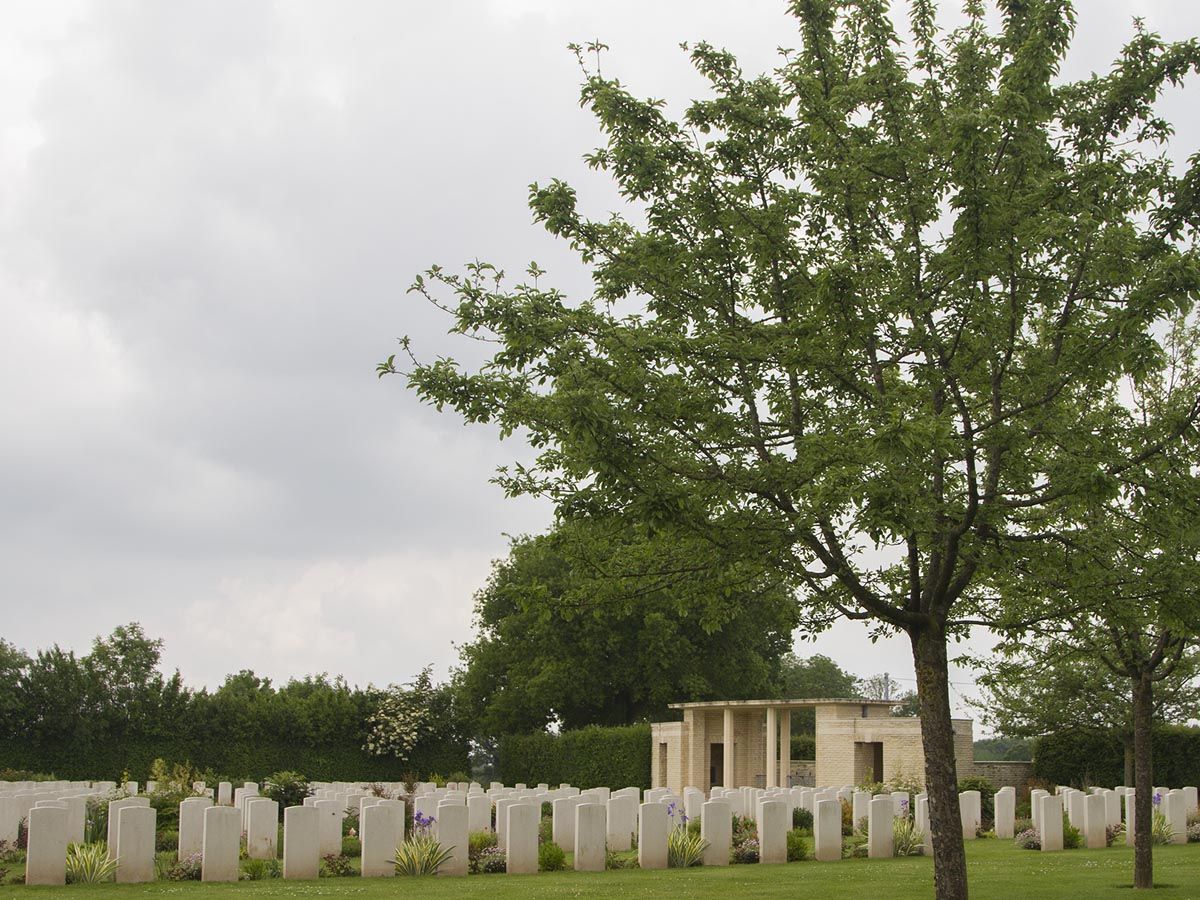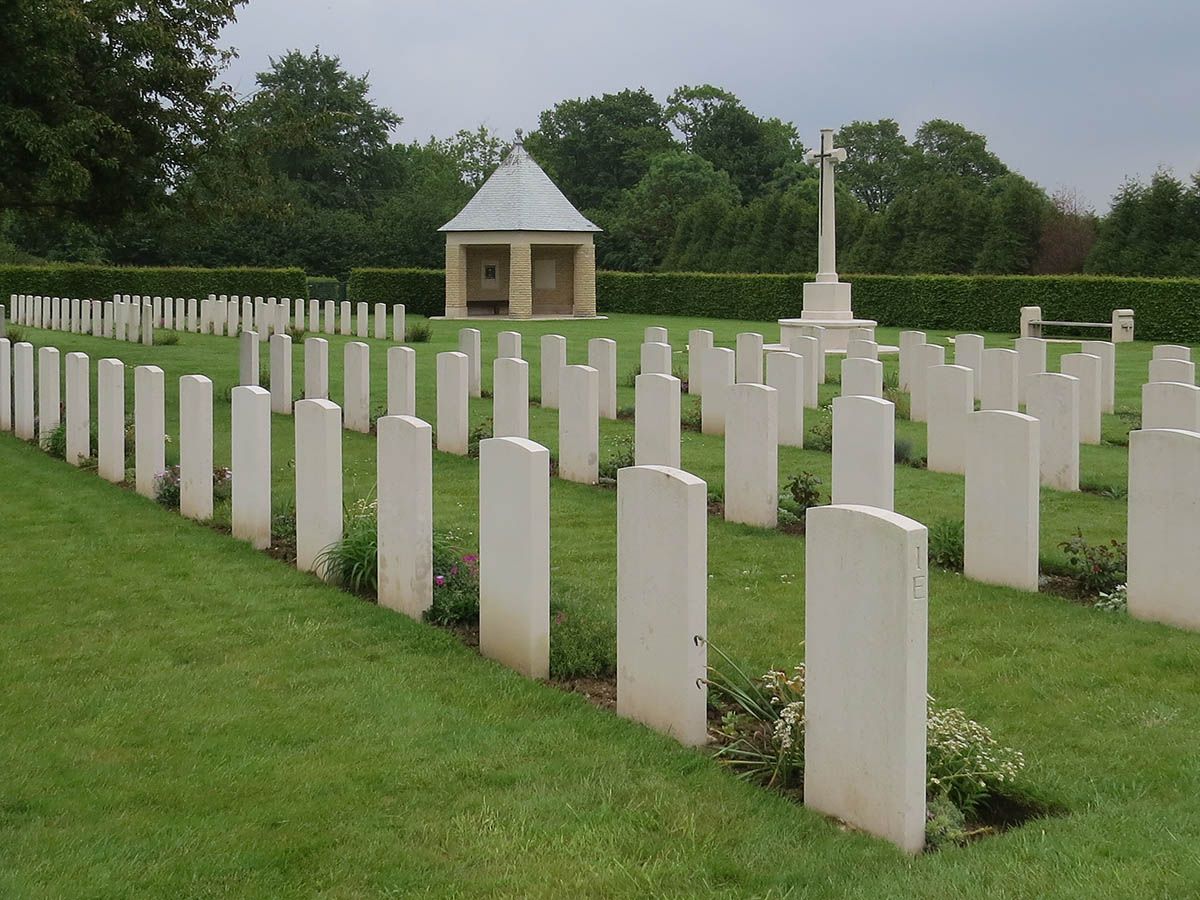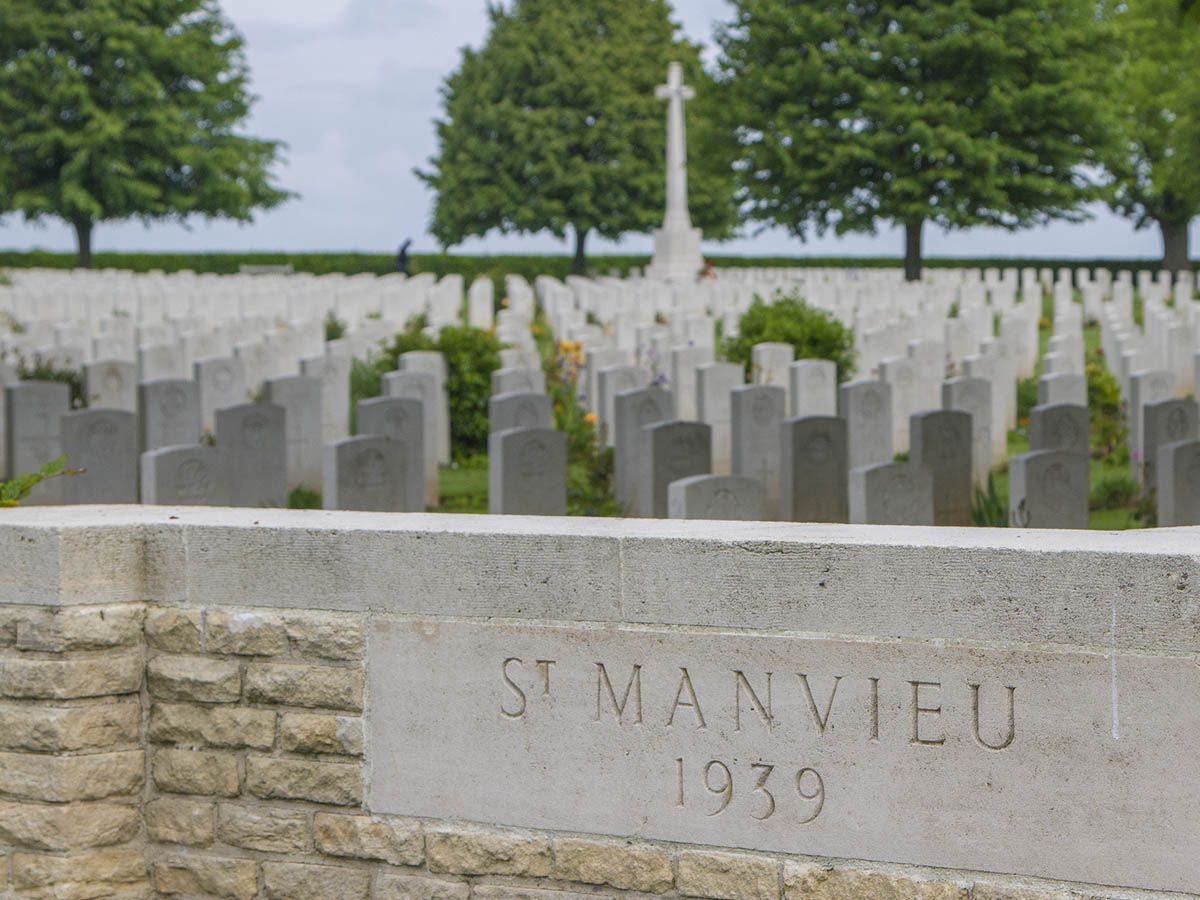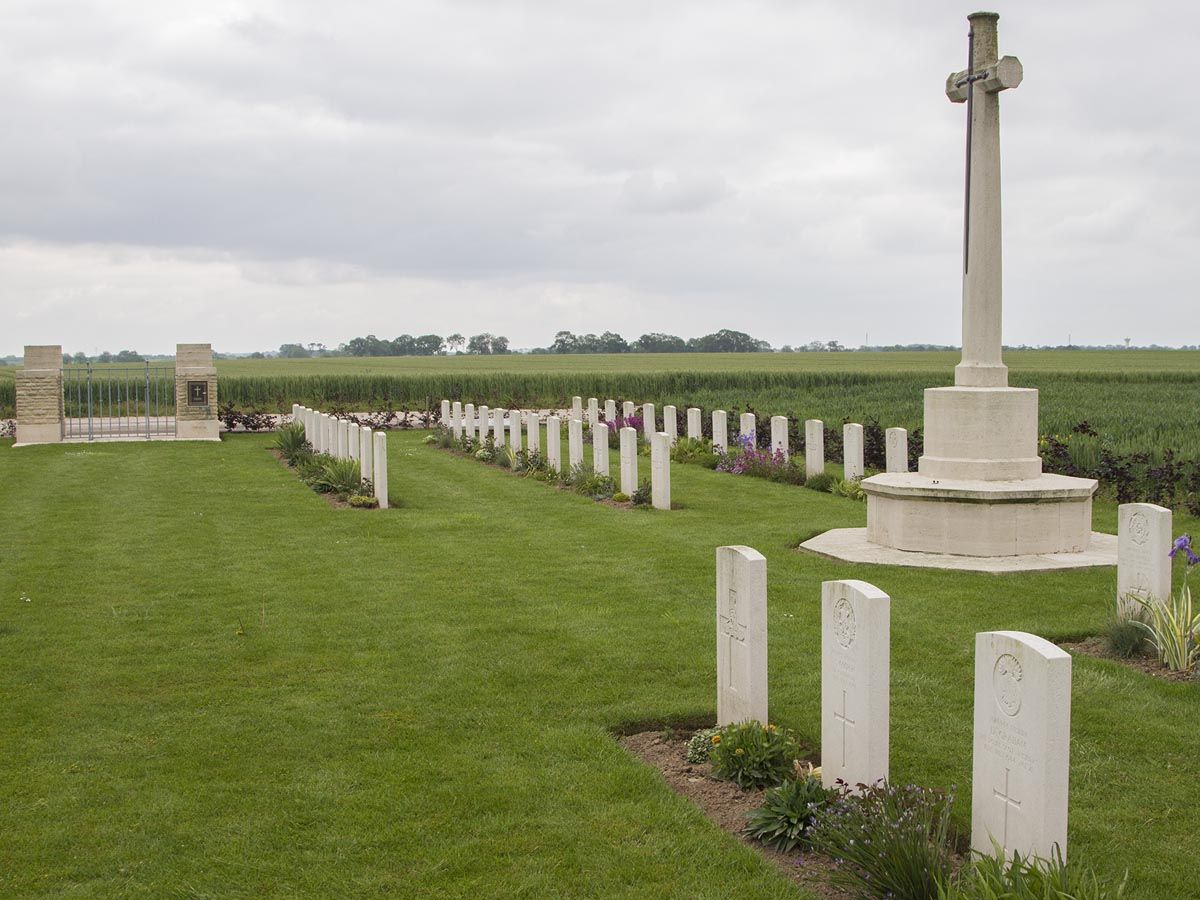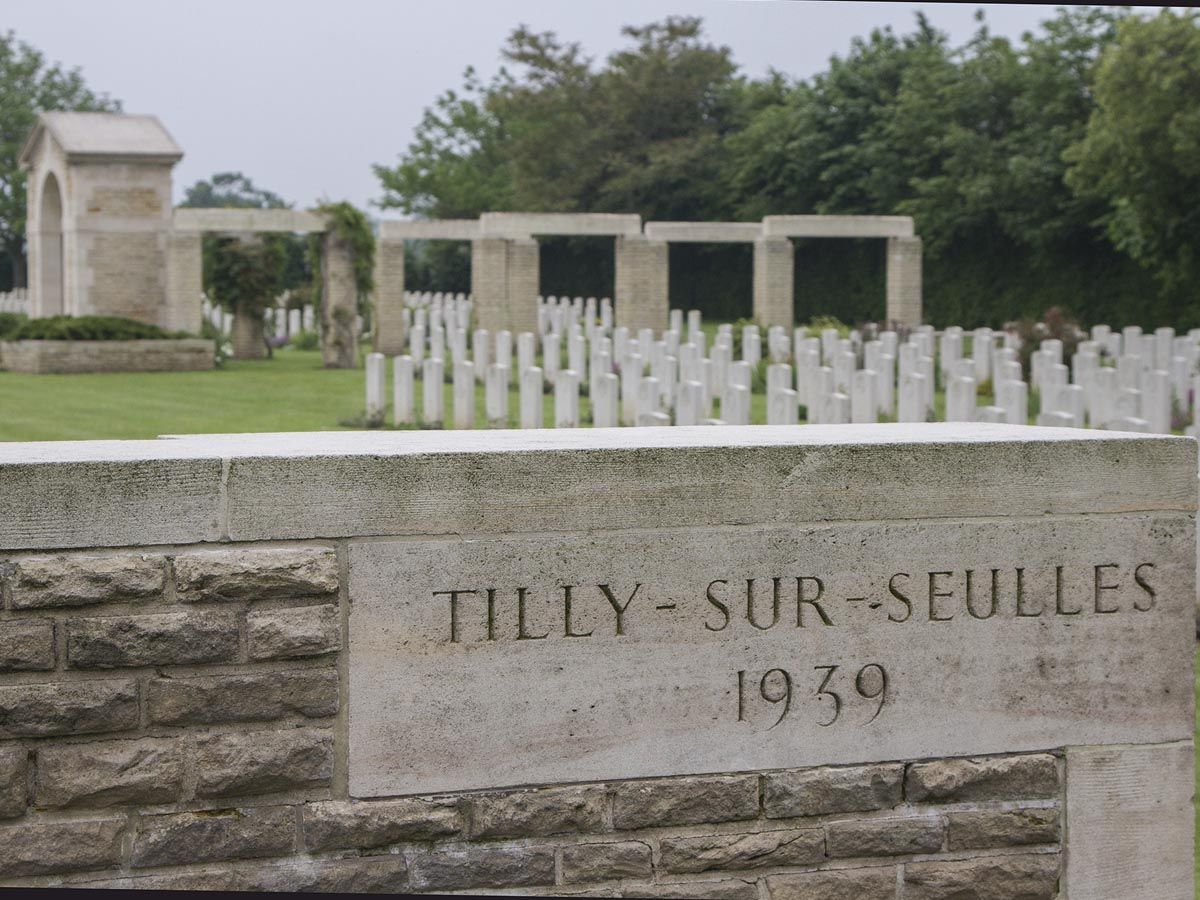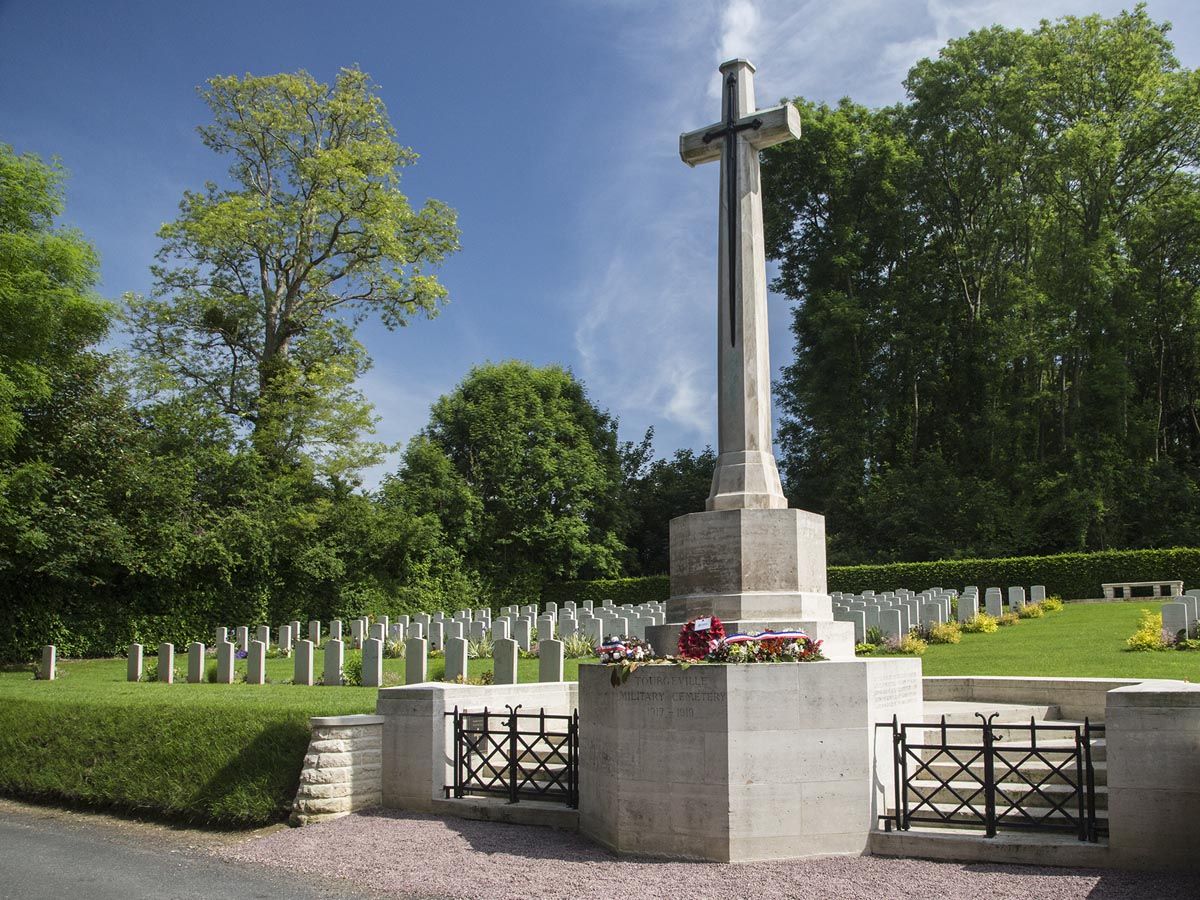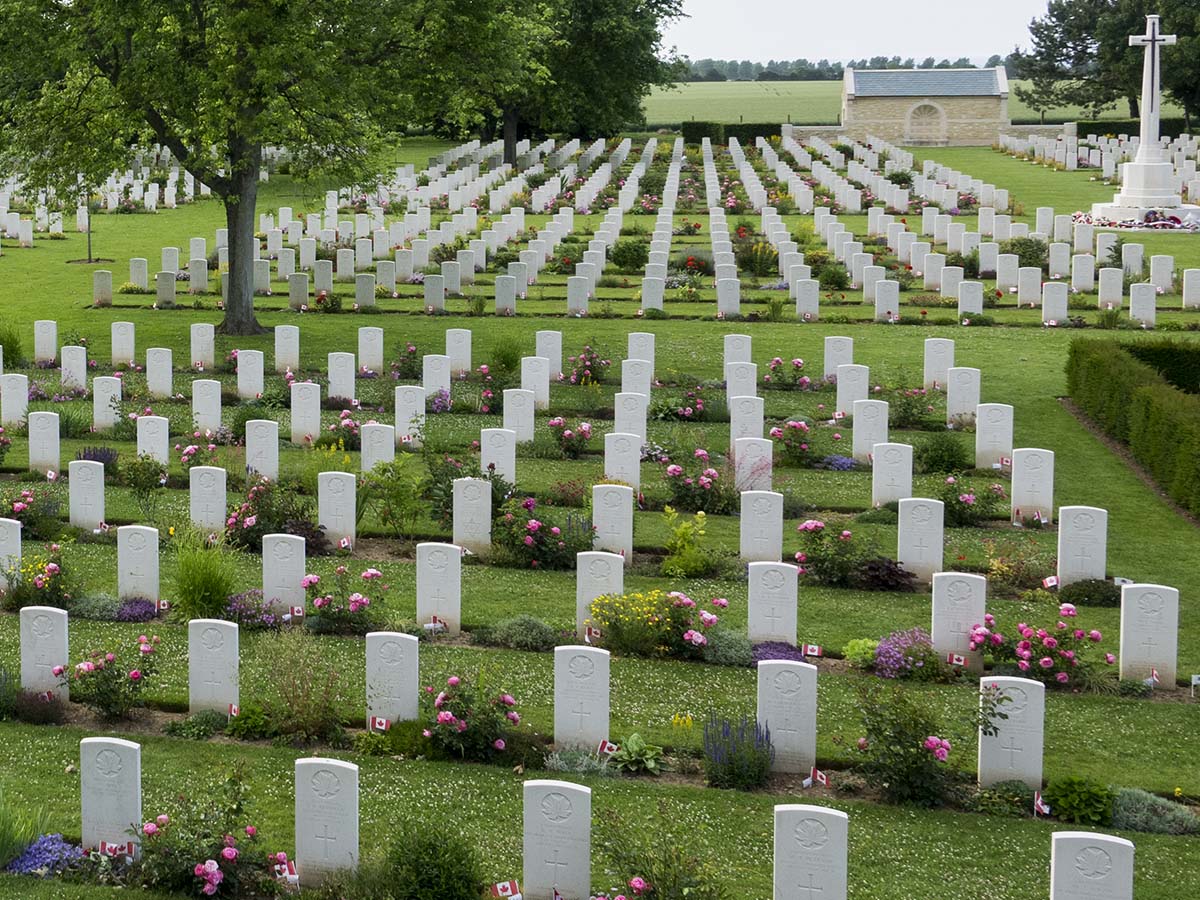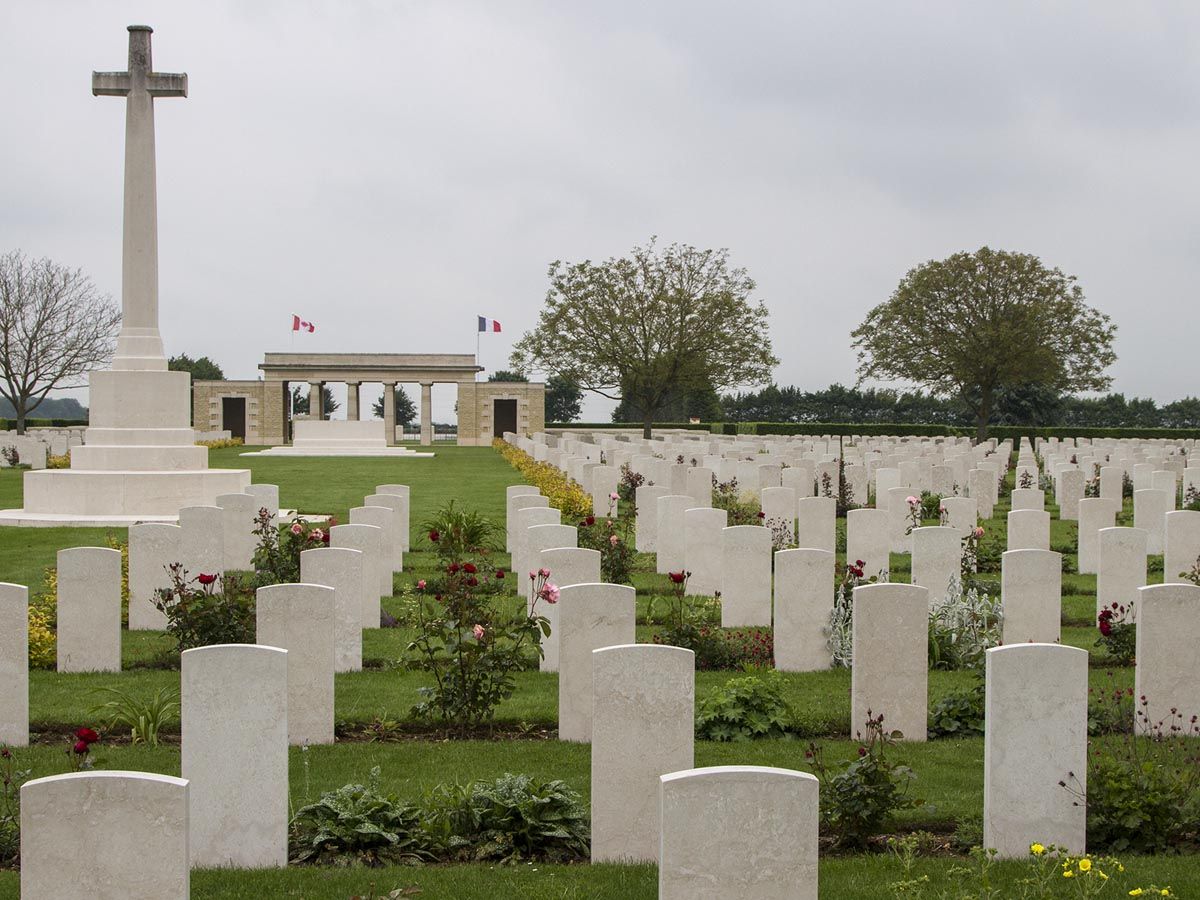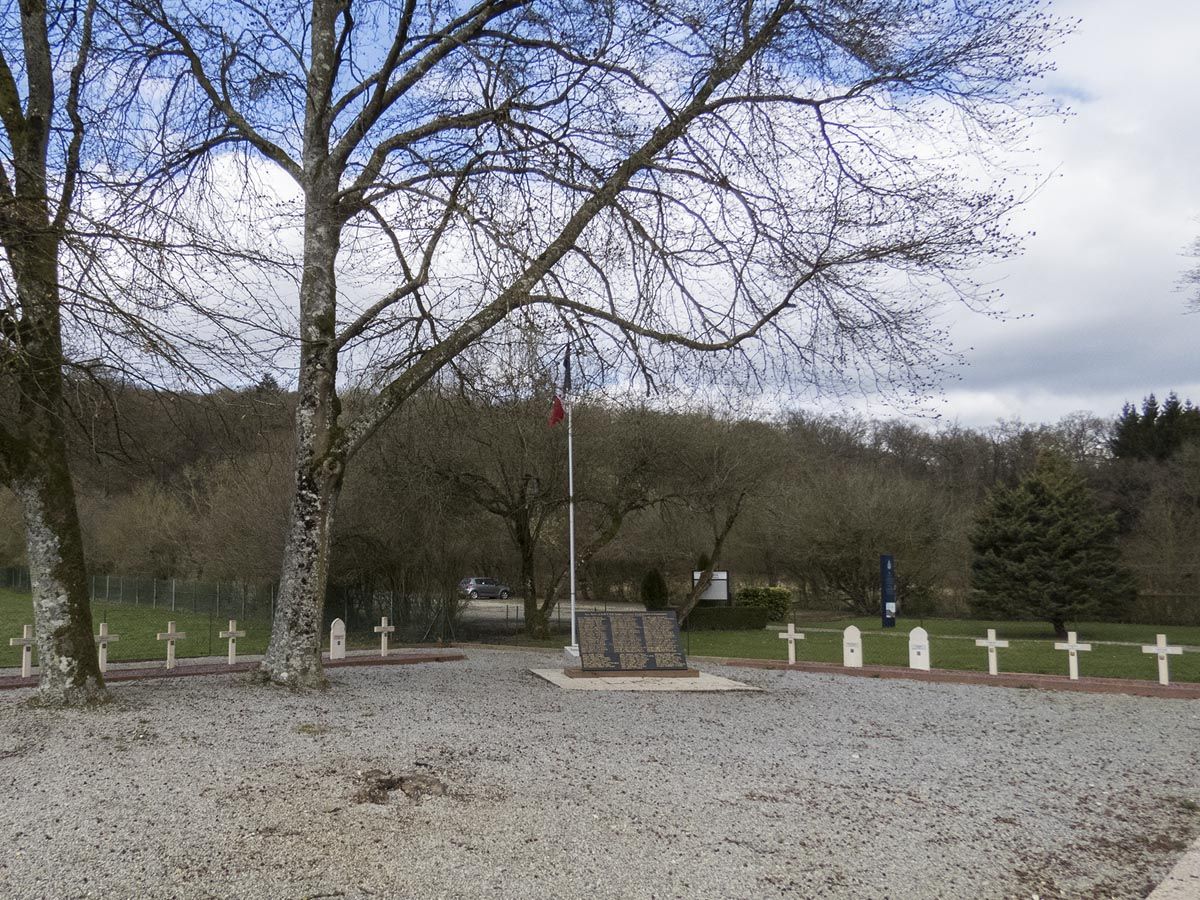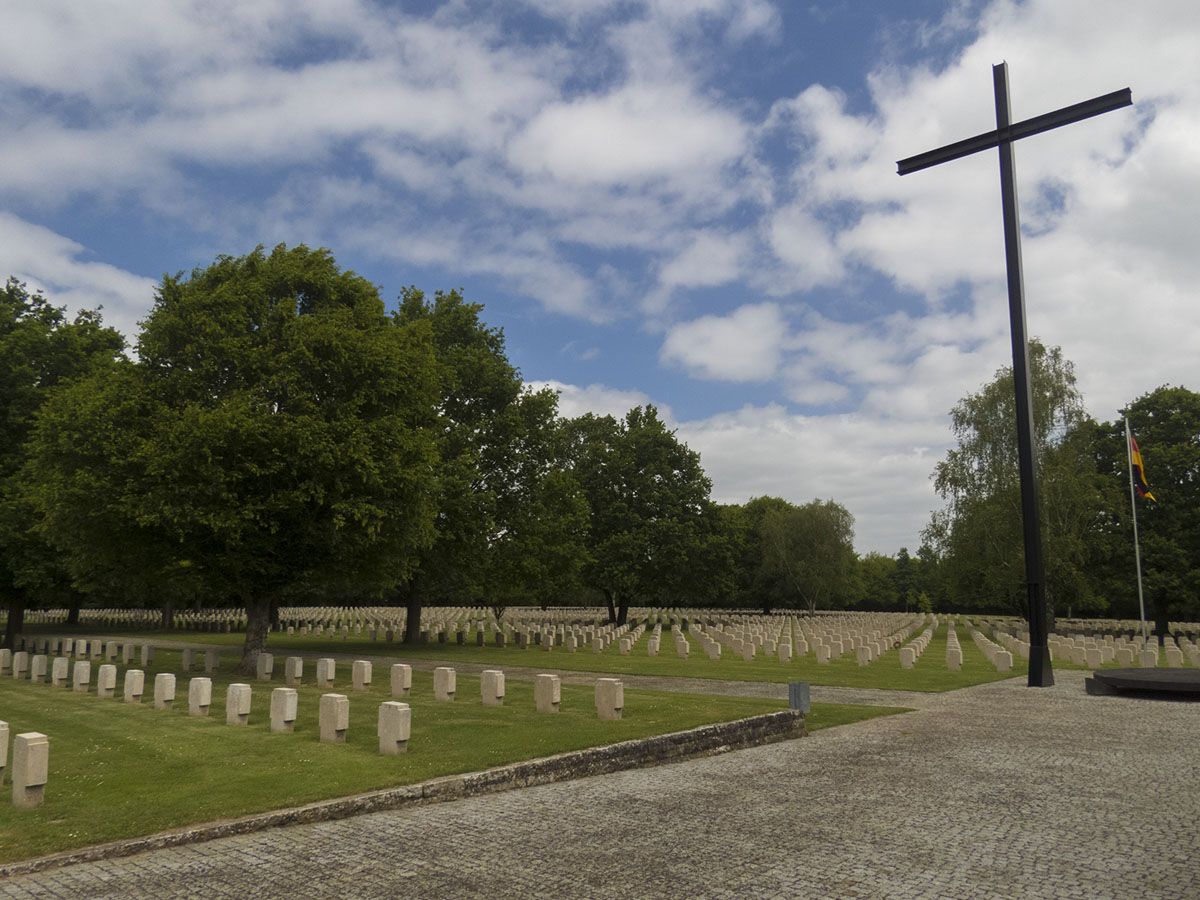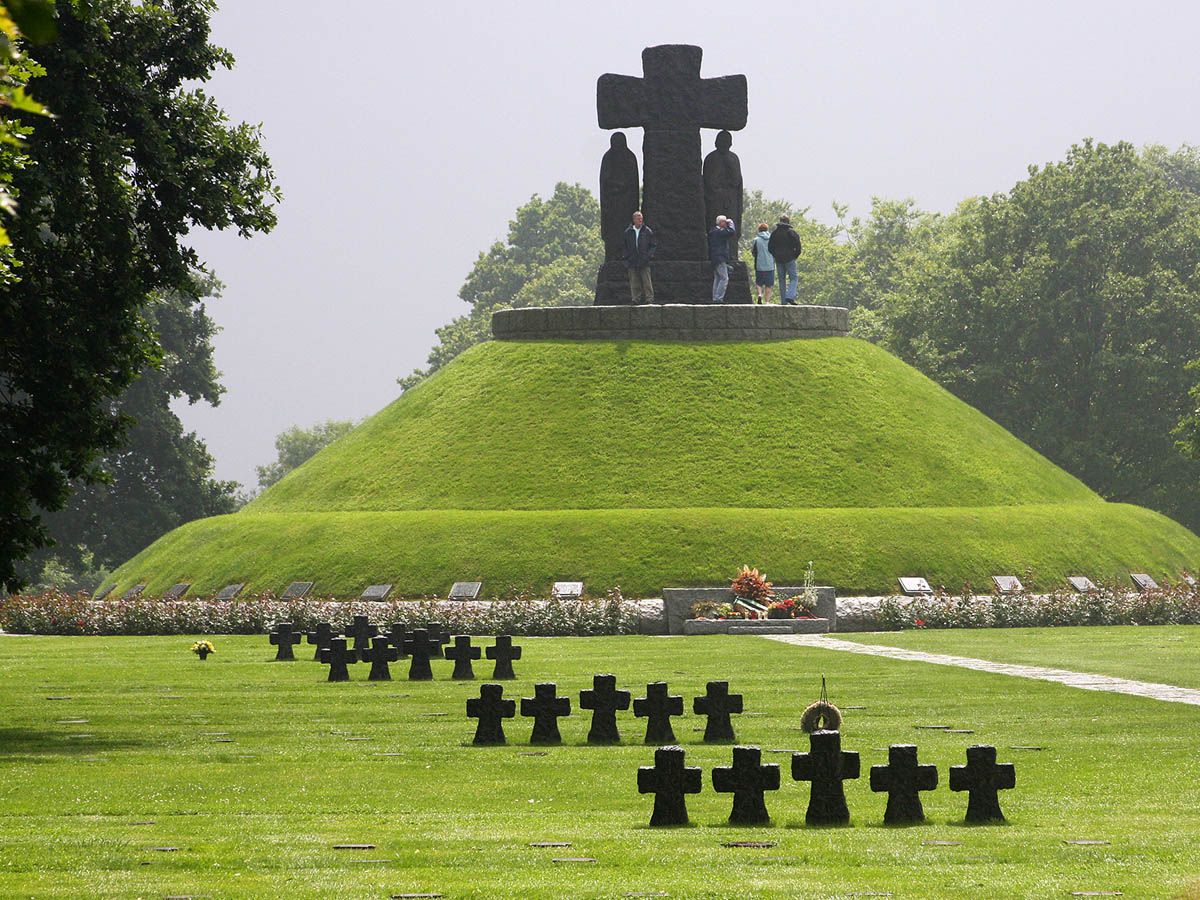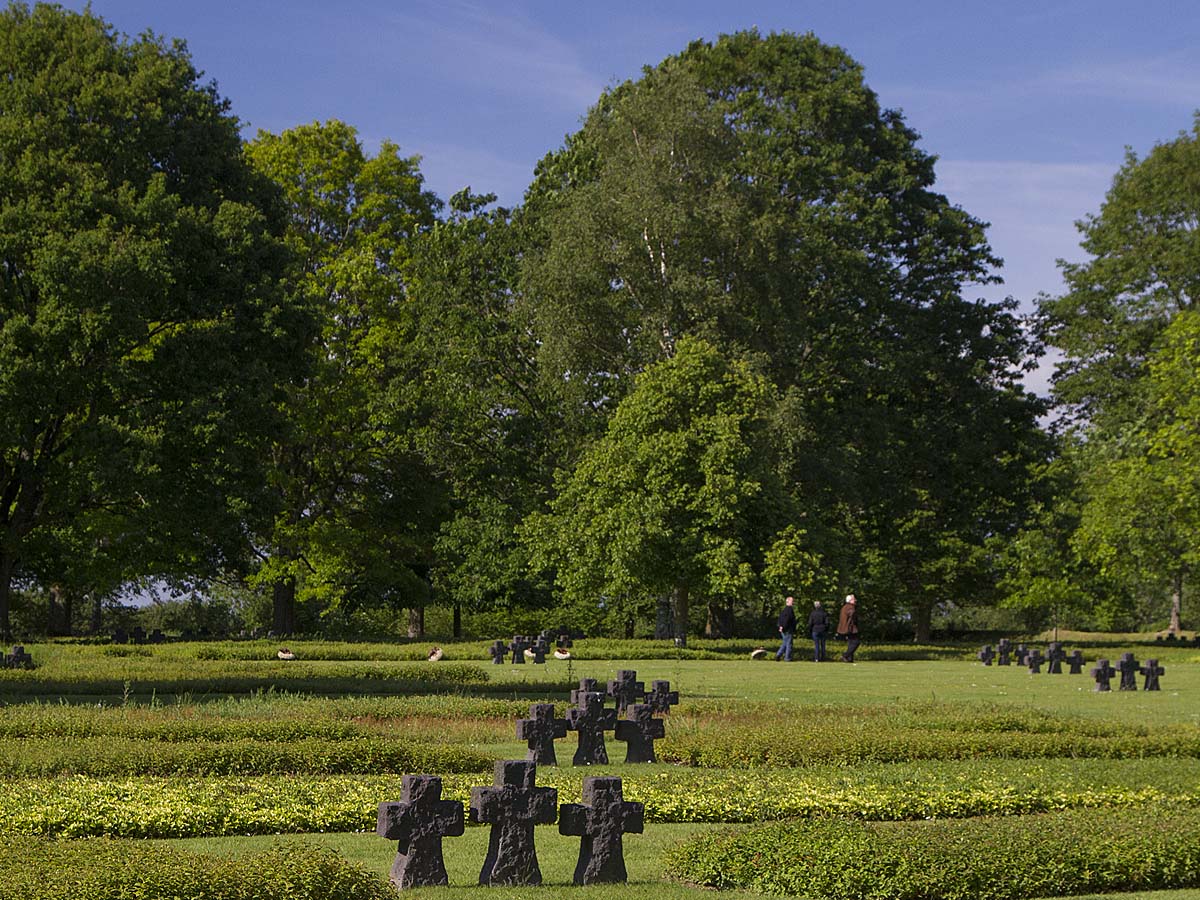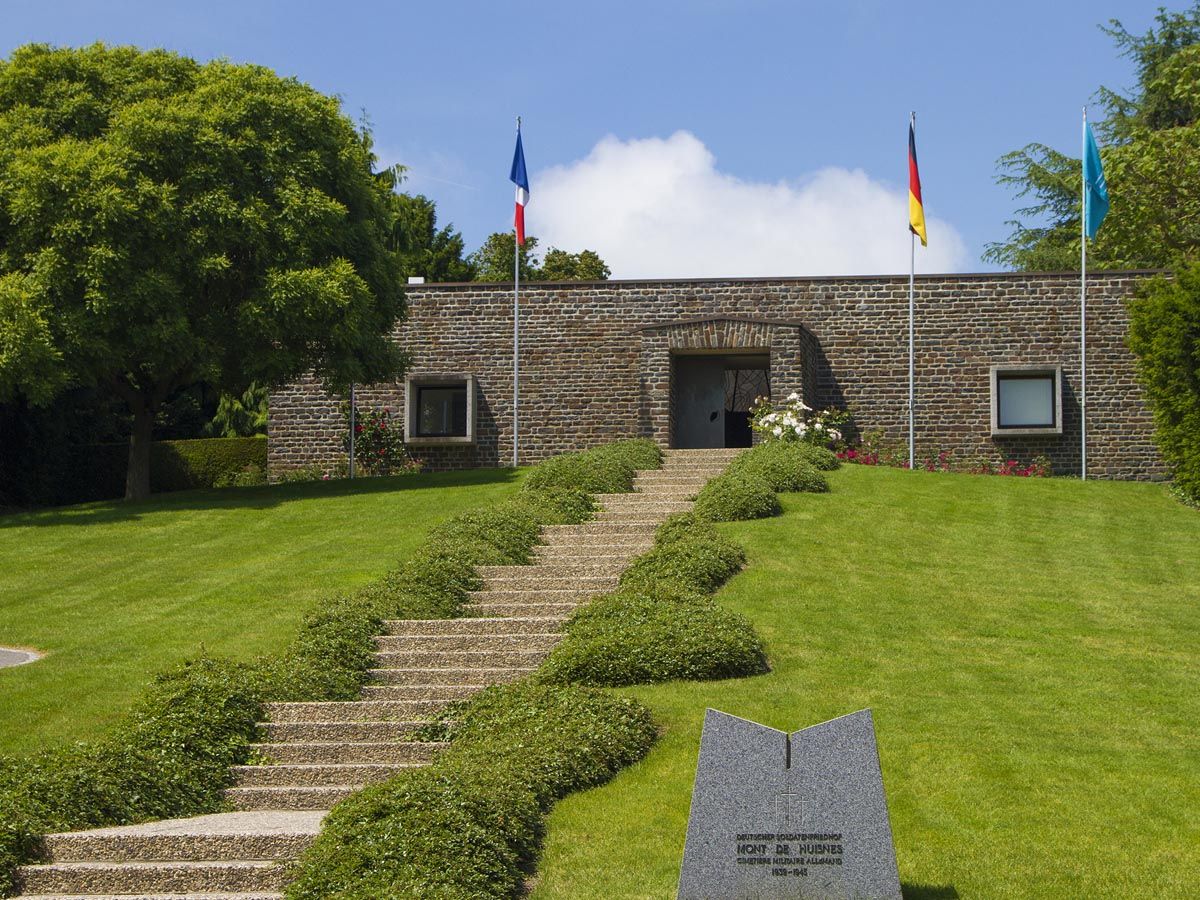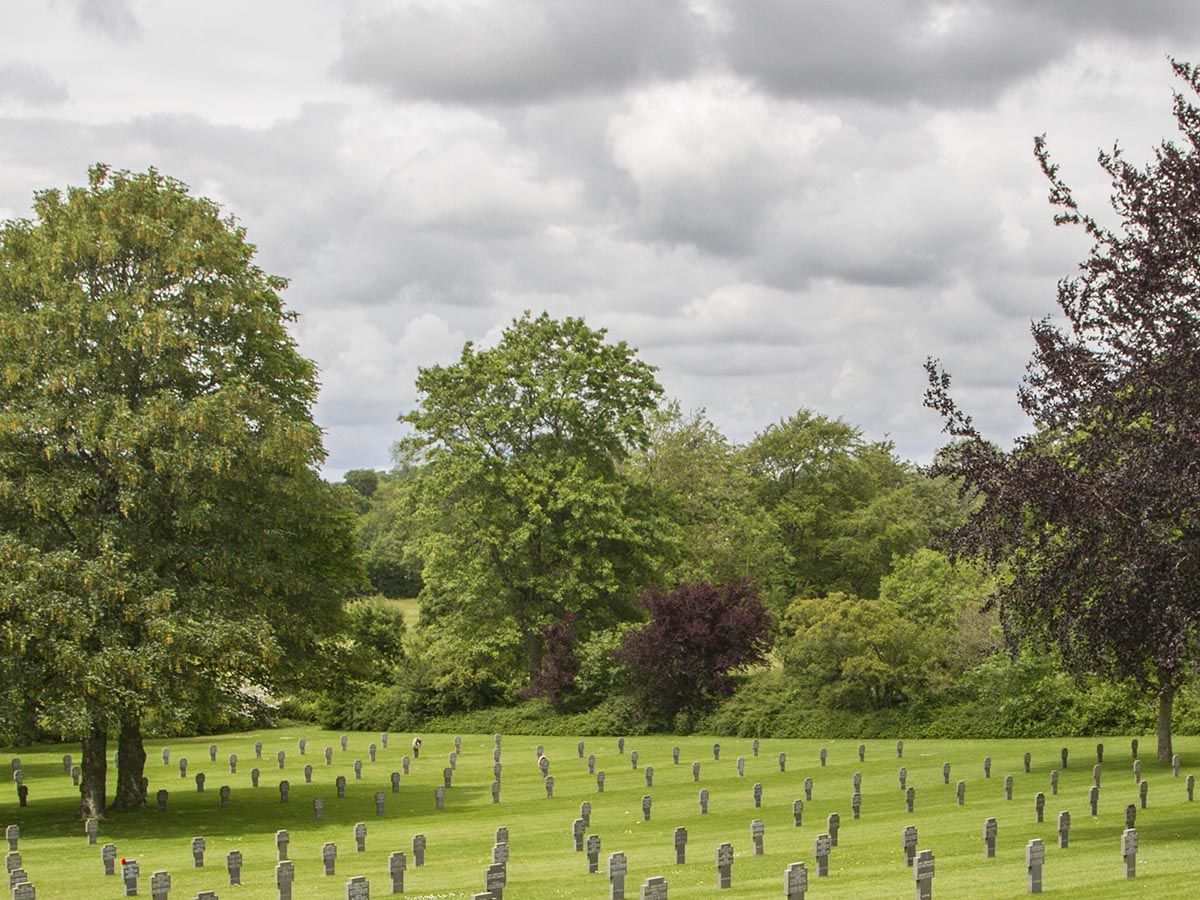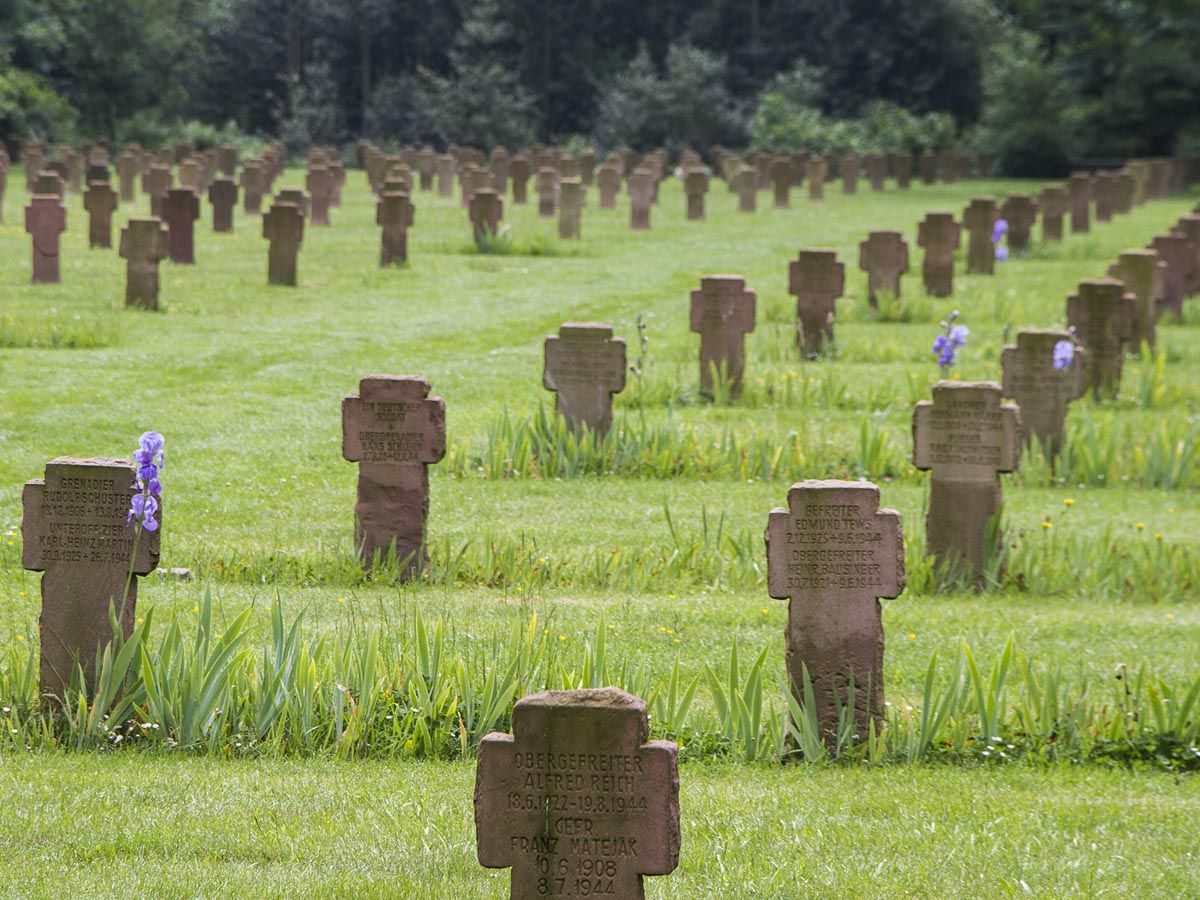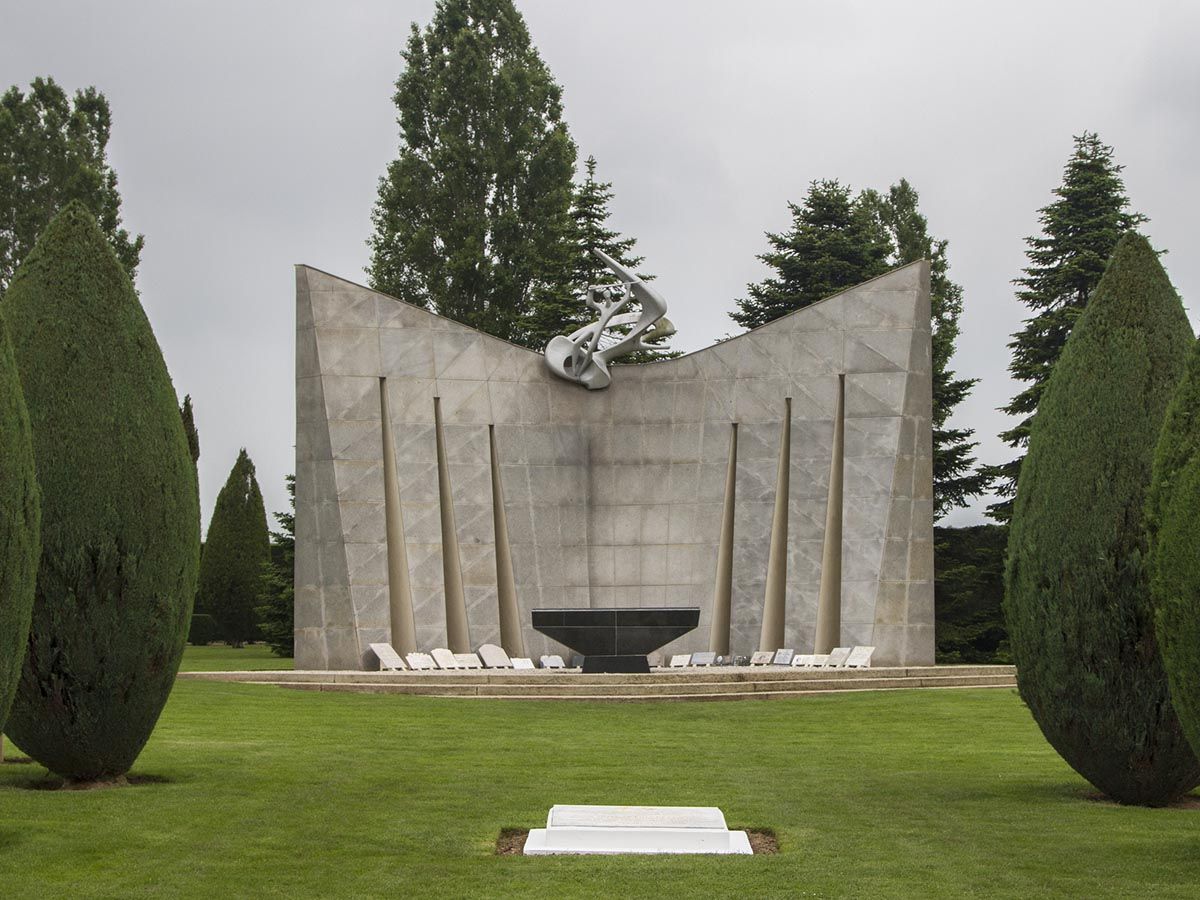Tucked away in the peaceful Normandy countryside, Orglandes German War Cemetery offers a somber yet important stop for visitors exploring the region’s World War II history. The cemetery, located about 30 km southeast of Cherbourg and just 7 km west of Sainte-Mère-Église, contains the remains of German soldiers who fell during the Normandy campaign of 1944. Originally, both American and German casualties were buried here, but American remains were later transferred to dedicated American cemeteries.
As you walk among the rows of simple crosses and markers, you’ll find a place of quiet reflection that tells a different side of the Normandy story. The cemetery sits on the northern edge of the small village of Orglandes, making it easily accessible yet respectfully removed from the bustle of more popular tourist sites. Some visitors report that guides share individual stories of the fallen soldiers, adding a personal dimension to your visit that helps you connect with the human cost of war.
History of Orglandes German War Cemetery
The Orglandes German War Cemetery stands as a solemn reminder of the human cost of World War II. Its history spans from the aftermath of D-Day to its development as a place of remembrance.
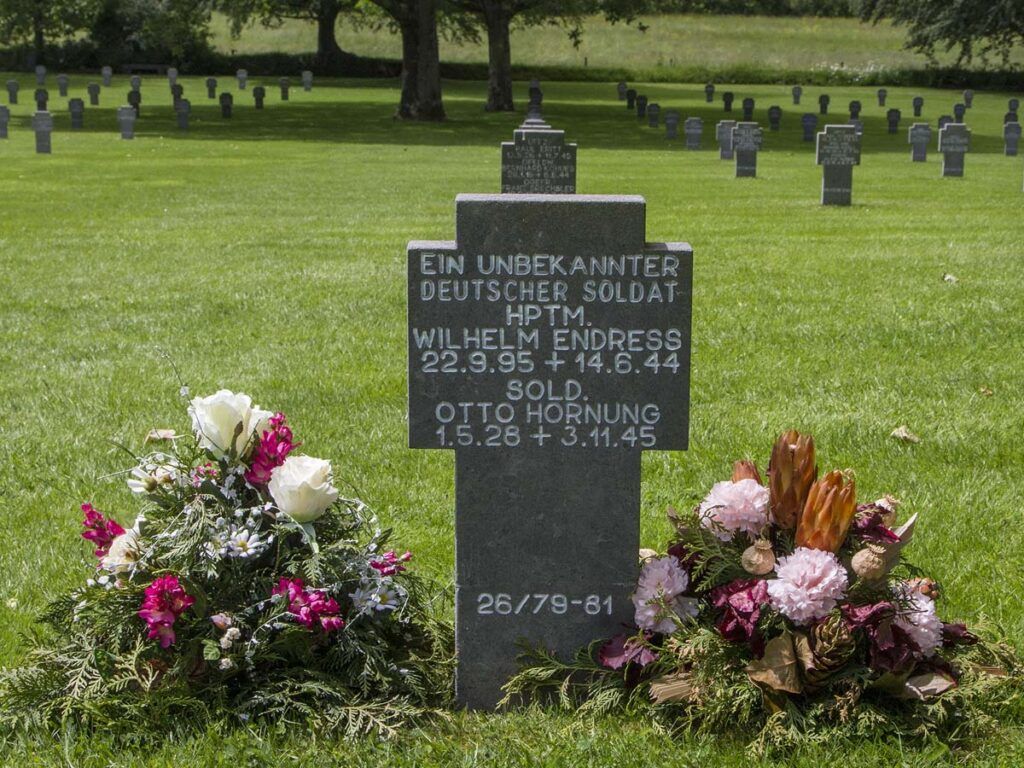
Founding and Purpose
The cemetery began as a temporary burial ground in the summer of 1944, following the Allied invasion of Normandy. Initially, both American and German soldiers were buried here after falling in battle. The site was chosen for practical reasons—the need to properly bury the war dead quickly in the aftermath of intense fighting.
As one of six German war cemeteries in Normandy, Orglandes serves a dual purpose. It provides a final resting place for German military personnel and stands as a somber reminder of war’s consequences. Though smaller than other German cemeteries in the region, it holds significant historical importance.
The cemetery embodies the German approach to war memorials, which often emphasize the connection between mankind and nature, reflecting German cultural and memorial traditions.
D-Day and the Battle of Normandy
The soldiers buried at Orglandes primarily fell during the summer of 1944, in the fierce fighting that followed the D-Day landings on June 6. As Allied forces pushed inland from the beaches, German defenders fought desperately across the Normandy countryside.
Many of the young men buried here were part of units trying to contain the Allied breakout from the beachheads. The cemetery contains remains of soldiers who died in different aspects of the Normandy campaign, including those who fought in defensive positions around Cherbourg and the Cotentin Peninsula.
Each grave represents an individual story within the larger narrative of the Battle of Normandy. Some gravestones mark the final resting place of identified soldiers, while others contain unidentified remains—a testament to the chaos of war.
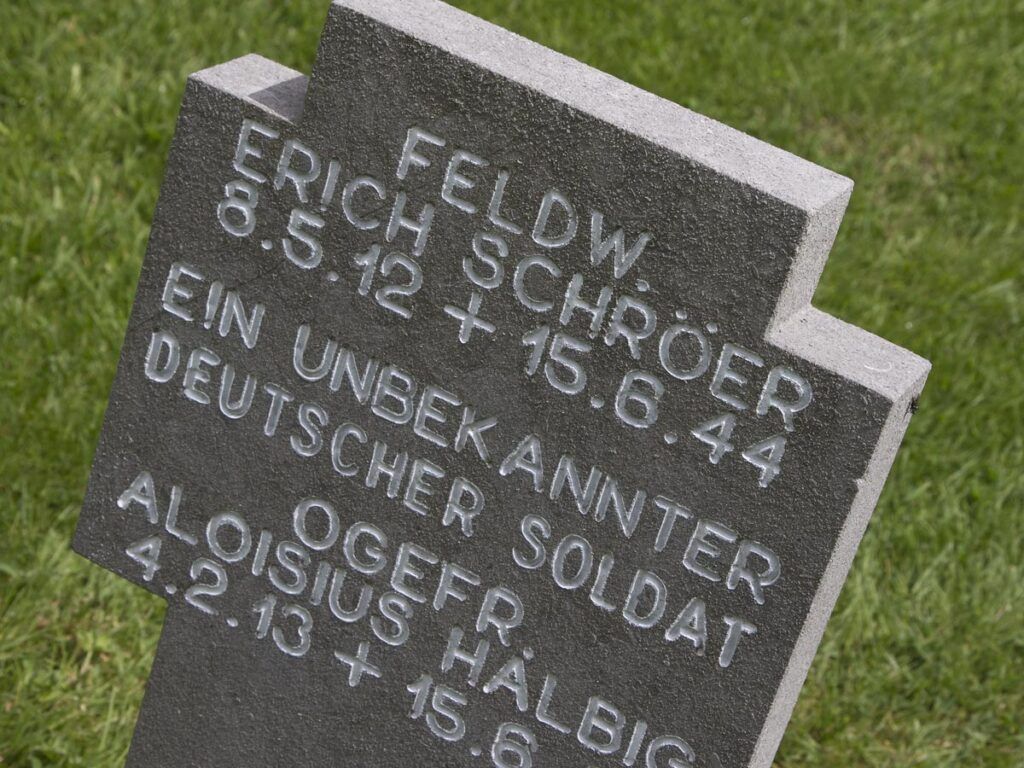
Post-World War II Developments
In 1945-1946, American authorities transferred their soldiers’ remains from Orglandes to dedicated American cemeteries. This left Orglandes primarily as a German burial ground. The cemetery underwent significant reorganization during this period.
The current cemetery was officially established when the German War Graves Commission (Volksbund Deutsche Kriegsgräberfürsorge) took responsibility for maintaining the site. They transformed it from a battlefield burial ground to a formal cemetery designed for remembrance and reflection.
Today, Orglandes stands as a place of reconciliation. Visitors can learn about individual soldiers’ stories from guides who highlight specific graves. The cemetery’s simple design, with rows of flat markers amid natural landscaping, creates a peaceful atmosphere that encourages contemplation about war’s human cost.
The Cemetery Today
Orglandes German War Cemetery stands today as a solemn place of remembrance and reflection. Its peaceful grounds honor the thousands of German soldiers who lost their lives during World War II in Normandy.
Design and Layout
The cemetery spreads across carefully maintained grounds on the northern edge of Orglandes village. You’ll find over 10,000 German soldiers buried here, their graves marked by simple flat stones laid in neat rows across the landscape. Unlike some of the Allied cemeteries, the design follows a more subdued approach.
Each grave marker contains the name, rank, and dates of the soldier when known. Some stones mark the resting places of multiple unknown soldiers. The layout creates a sense of order and dignity that respects the fallen, regardless of which side they fought for.
The cemetery is designed to encourage quiet contemplation as you walk among the rows. Low hedges and trees frame different sections, creating a peaceful atmosphere.
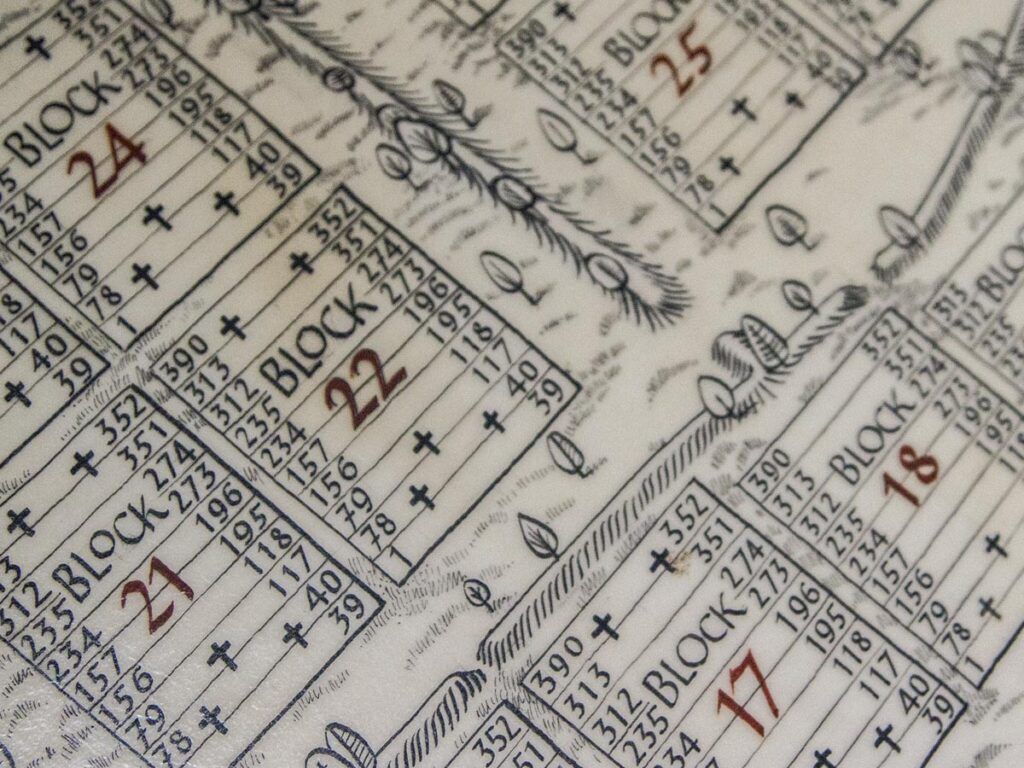
Memorials and Monuments
At the center of the cemetery stands a modest memorial that serves as a focal point for visitors. Unlike elaborate monuments found elsewhere, Orglandes focuses on simplicity and respect for the dead.
Several information panels provide context about the German soldiers buried here. These panels tell the stories of individual soldiers, helping you connect with the human dimension of the war beyond just statistics.
Some specific graves have become informal points of interest. Your visit might include seeing the graves of:
- Young soldiers barely in their teens
- Officers who led German defensive operations
- Soldiers from diverse regions of Germany
These personal stories add depth to your understanding of the war’s human cost on all sides.
Cemetery Maintenance and Care
The German War Graves Commission (Volksbund Deutsche Kriegsgräberfürsorge) meticulously maintains the cemetery year-round. Their dedicated staff ensures the grounds remain dignified and peaceful for visitors and as a final resting place.
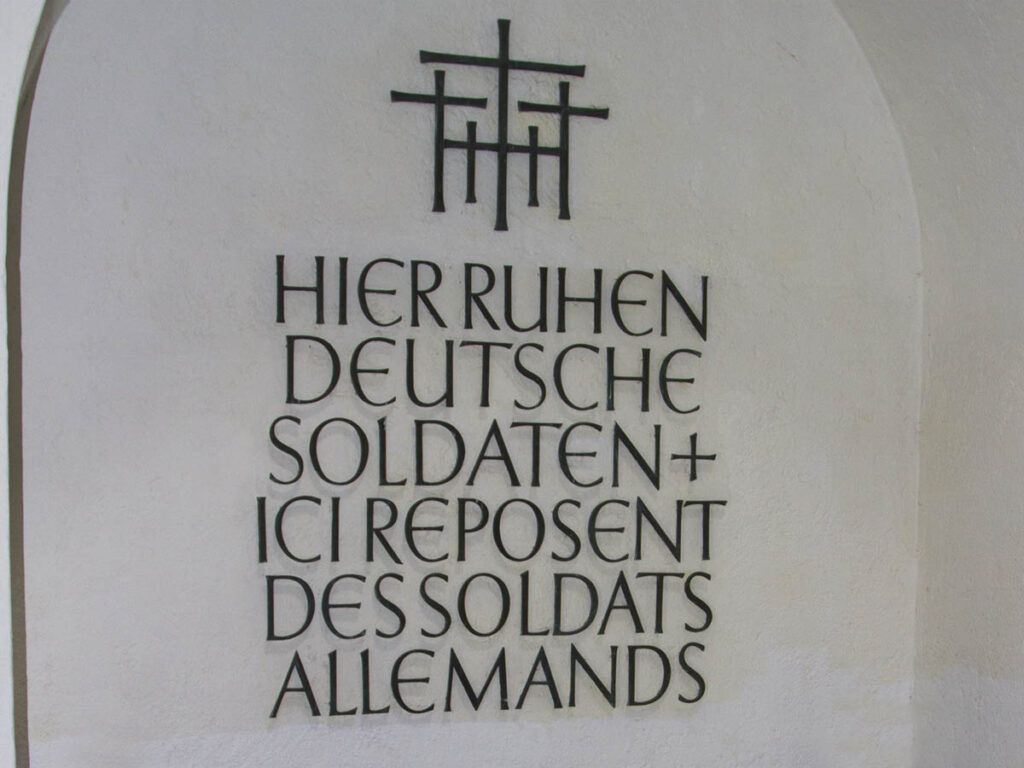
Local French volunteers often assist with special maintenance projects, demonstrating how former enemies have moved toward reconciliation. You’ll notice the immaculate condition of the grounds reflects this ongoing care.
Seasonal flowers and plants are carefully selected to enhance the cemetery’s atmosphere of quiet dignity. The commission also maintains detailed records of those buried here, assisting families who visit to pay respects to fallen relatives.
Visitors can contribute to maintenance efforts through donations at the site. This continued care ensures that regardless of the complicated history, all soldiers receive the respect in death that transcends the politics of war.
Honoring the Fallen
The Orglandes German War Cemetery serves as a solemn place of remembrance where visitors can pay respects to those who lost their lives during World War II. Various ceremonies and community connections help preserve the memory of these soldiers.
Ceremonies and Commemorations
Throughout the year, the cemetery hosts several memorial services that honor the fallen German soldiers. The most significant ceremony occurs on Volkstrauertag (German National Day of Mourning) in November, when representatives from both German and French governments lay wreaths at the site.
You’ll notice small tokens of remembrance left by visitors – flowers, stones, or personal mementos placed on individual graves. These quiet tributes happen daily.
Some German families make pilgrimages to visit relatives buried far from home. The cemetery maintains a visitor book where you can read touching messages from those who’ve come to pay their respects.
School groups often visit as part of educational programs about World War II and its aftermath.
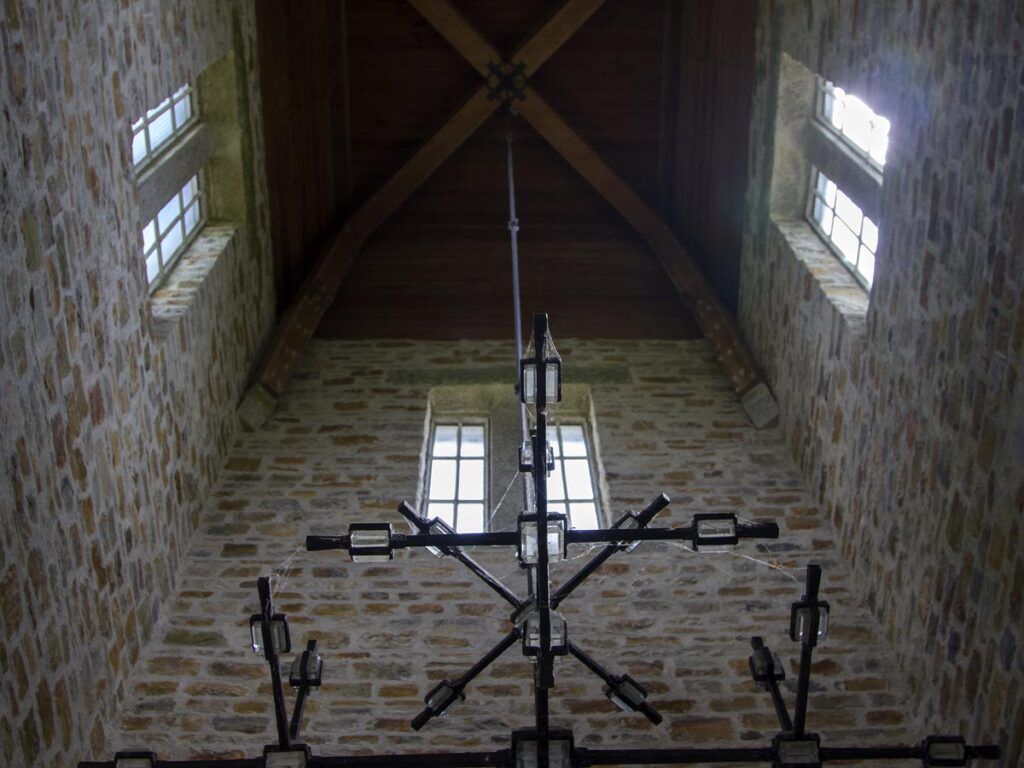
Impact on Local Communities
The cemetery has become an important symbol of French-German reconciliation in the decades following the war. Local French residents help maintain the grounds, showing how former enemies can move toward mutual respect and understanding.
You’ll find that many nearby businesses acknowledge the cemetery’s importance to local tourism. Small cafés and shops in Orglandes often display historical information about the site.
Community volunteers sometimes serve as informal guides, sharing stories about specific soldiers buried there. Our guide pointed out three particular graves and shared the personal stories of those soldiers.
The site creates meaningful dialogue between generations. Elderly locals who lived through the occupation often share their experiences with younger visitors.
Visiting Orglandes German War Cemetery
The Orglandes German War Cemetery offers visitors a solemn place for reflection on the human cost of war. Located on the northern edge of Orglandes village in Normandy, this cemetery provides a peaceful setting to learn about history and pay respects to those who lost their lives.
Opening Hours and Entrance Fees
The cemetery is open daily to visitors throughout the year. Typical operating hours are from 8:00 AM to 7:00 PM during summer months (April to September) and 8:00 AM to 5:00 PM in winter (October to March).
There is no entrance fee to visit the Orglandes German War Cemetery. This free access allows everyone to visit and reflect on this important historical site.
You won’t encounter waiting times as the cemetery rarely becomes crowded. Most visitors spread out across the grounds, creating a quiet atmosphere conducive to reflection and remembrance.
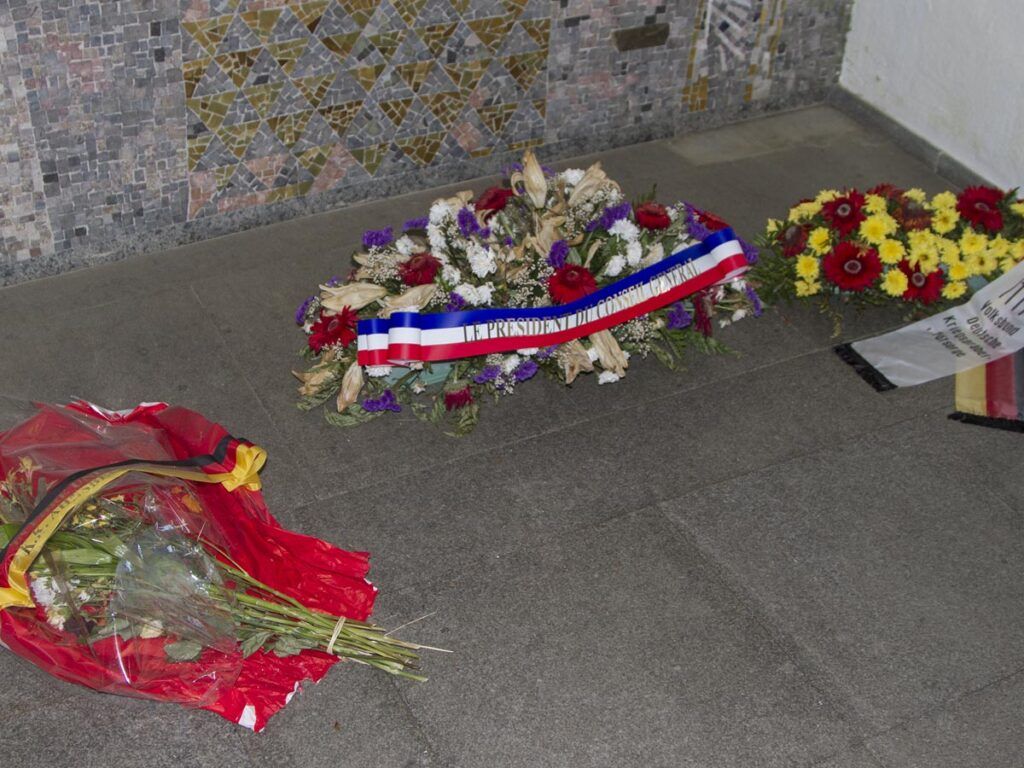
Facilities and Accessibility
The cemetery is well-maintained with clearly marked pathways that make navigation straightforward. Parking is available near the entrance for visitors arriving by car.
Restroom facilities are limited, so you might want to plan accordingly before your visit. There is no on-site café or restaurant, but the nearby village of Orglandes offers some options for refreshments.
The grounds are generally accessible for those with mobility challenges, with mostly flat terrain. However, some areas might be slightly difficult to navigate for wheelchair users, especially after rain.
Information panels throughout the cemetery provide context about the site’s history, including the fact that both German and American soldiers were initially buried here after D-Day in 1944.
Guided Tours and Educational Services
Several tour companies offer guided visits to the cemetery as part of broader Normandy battlefield tours. These guides often share stories of specific soldiers buried here, bringing a personal dimension to the historical events.
Booking a guided tour in advance is recommended through services like Expedia or local tourism offices. Tours typically last between 30-45 minutes and provide valuable historical context about the cemetery and those interred there.
For a more educational experience, some guides will highlight specific graves and tell the stories of individual soldiers, creating poignant moments of connection to the past. This personal approach helps visitors understand the human dimension beyond the statistics of war.
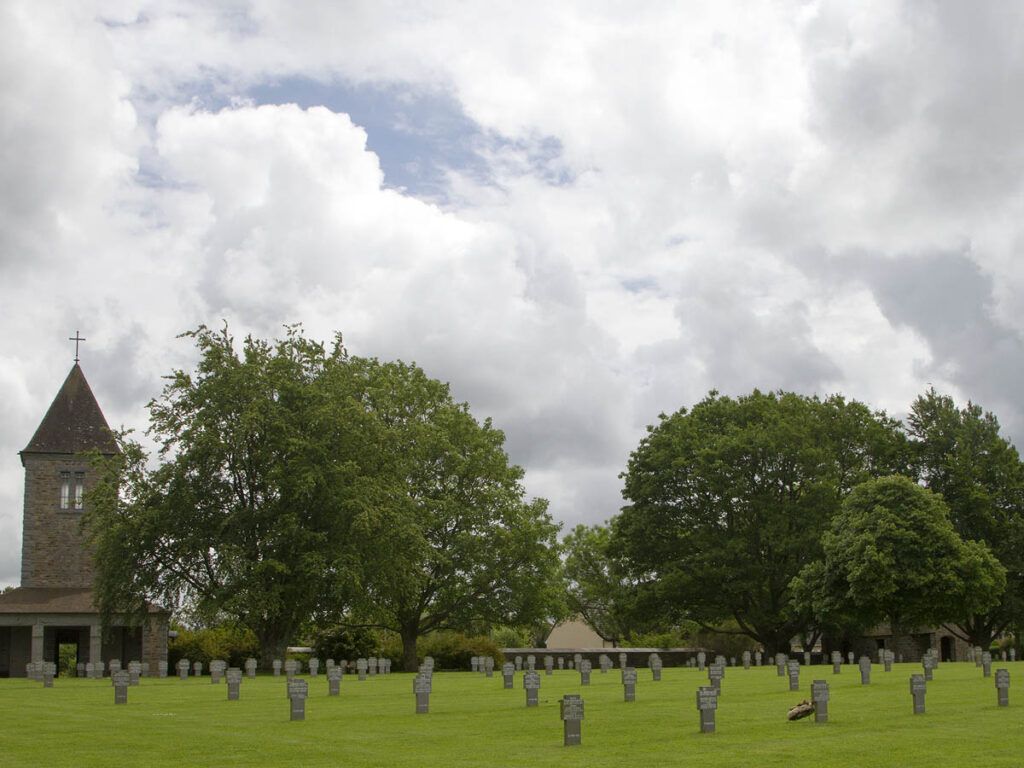
Self-guided options are also available, with some brochures provided at the entrance that explain the cemetery’s significance and layout.
Recommended D-Day Tours from Paris:
- From Paris: Normandy D-Day Beaches Day Trip
- From Paris: 2-Day Normandy & Brittany Tour
- Normandy American D-Day Experience (From Bayeux Station)
Recommended D-Day Tours from Bayeux:
- From Bayeux: American D-Day Sites in Normandy Full-Day Tour
- From Bayeux: American D-Day Sites in Normandy Half-Day Tour
- From Bayeux: Half-Day Normandy WWII Sidecar Tour
- Full-Day US Battlefields of Normandy Tour from Bayeux
Recommended Private D-Day Tours:
- From Paris: Normandy D-Day Landing Beaches Full-Day Tour
- From Rouen: Normandy D-Day Beaches Private Full-Day Tour
- Private Tour: Rouen, Bayeux, and Falaise Day Trip from Bayeux
- Normandy WWII Private Half-day Sidecar Tour From Bayeux
Recommended Band of Brothers Tours:
Planning Your Visit
When visiting the Orglandes German War Cemetery, proper planning will enhance your experience at this solemn historical site. The cemetery’s peaceful setting in the Normandy countryside offers a moment for reflection while learning about World War II history.
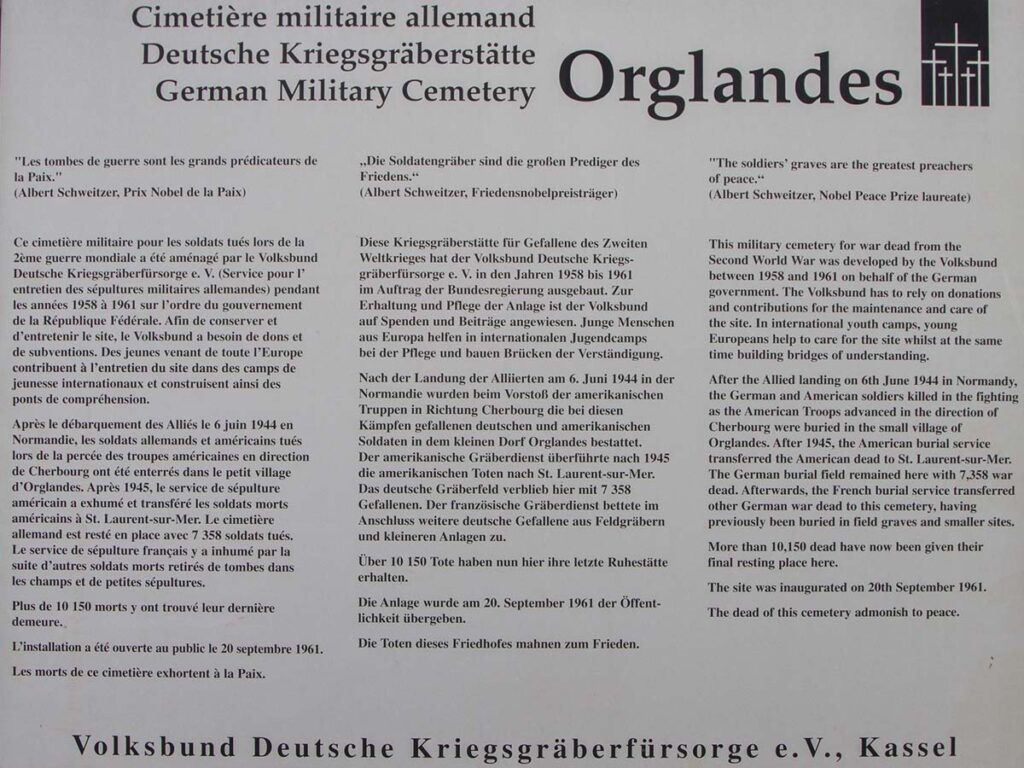
Travel Tips and Accommodations
The Orglandes German War Cemetery is located on the northern edge of the village of Orglandes, about 70km west of Bayeux. You’ll find it easily accessible by car, which is the most convenient way to reach this rural location. The cemetery is open daily to visitors, and entry is free.
For accommodations, the nearby towns of Carentan and Sainte-Mère-Église offer several lodging options. These towns played significant roles during the D-Day operations and make excellent bases for exploring the region.
I recommend visiting in the morning when the light is soft and the grounds are often less crowded. Wear comfortable walking shoes and bring a light jacket, as the Normandy weather can be changeable even in summer.
Recommended Bayeux Hotels:
Exploring Surrounding Normandy Region
The Normandy coast is rich with WWII history sites that complement your visit to Orglandes. Sainte-Mère-Église, just 12km away, features the famous church where paratrooper John Steele was caught on the steeple during D-Day.
Other nearby historical sites include:
- Azeville Battery (fortified German position)
- Picauville and Chef du Pont (important battle locations)
- Utah Beach (15km away)
If you have extra time, venture further to Mont St-Michel, a spectacular medieval abbey on a rocky island about 100km southwest of Orglandes. This UNESCO World Heritage site offers a striking contrast to the war memorials.
The beautiful beaches of the Normandy coast also provide peaceful retreats after days of historical exploration. Local restaurants serve excellent Norman cuisine featuring fresh seafood, apple cider, and Camembert cheese.
Nearby Historical Attractions
When visiting Orglandes German War Cemetery, you’ll find several significant World War II sites within easy driving distance. These powerful historic landmarks help complete your understanding of the Normandy campaign and D-Day operations.
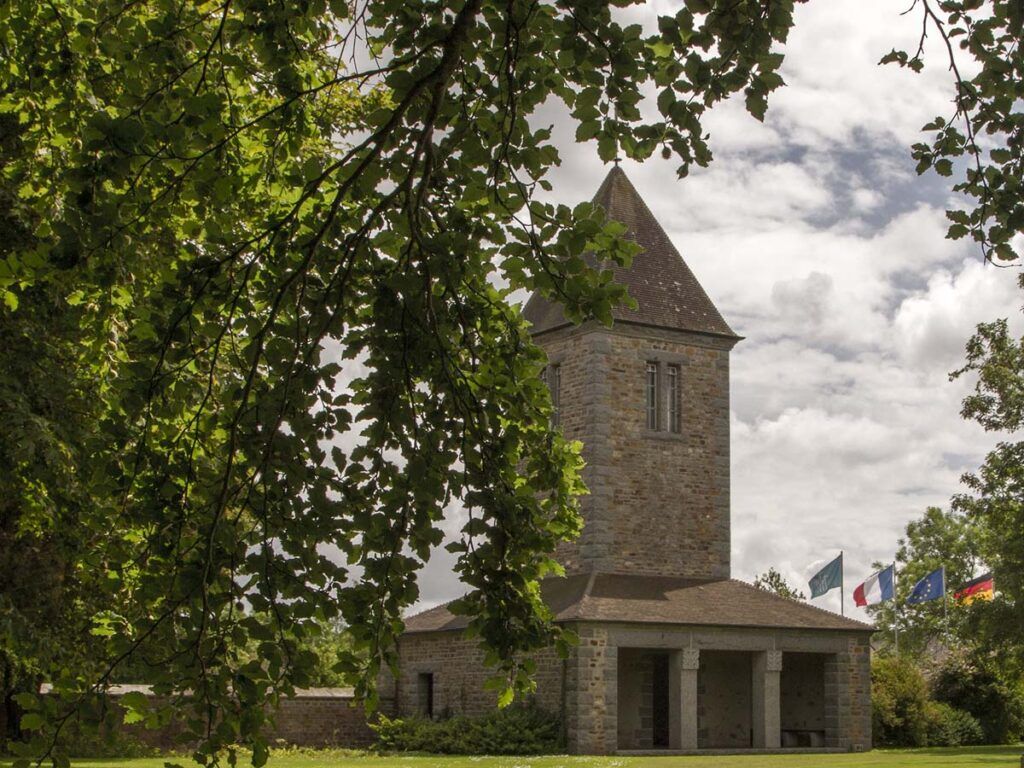
Normandy American Cemetery and Memorial
The Normandy American Cemetery sits on a cliff overlooking Omaha Beach, about 45 minutes from Orglandes. This solemn memorial contains the graves of 9,387 American soldiers who died during the D-Day landings and subsequent battles.
The cemetery’s perfectly aligned white marble crosses and Stars of David create a powerful visual reminder of the sacrifice made by these young Americans. The Memorial includes maps and narratives that explain the Normandy Campaign in detail.
Don’t miss the Garden of the Missing, which honors 1,557 soldiers whose remains were never found. The visitor center offers excellent exhibits that put personal faces to the statistics of war.
Pointe du Hoc Ranger Monument
Just 30 miles from Orglandes stands Pointe du Hoc, where 225 US Army Rangers scaled 100-foot cliffs under heavy fire on D-Day. This dramatic landscape still bears the scars of battle with massive bomb craters dotting the area.
You can explore the remaining German bunkers and gun emplacements that were prime targets for Allied forces. The Rangers’ mission was crucial as these positions could target both Utah and Omaha beaches.
The monument itself is a simple granite pylon, but the preserved battlefield tells the real story. Walking these grounds gives you a genuine appreciation for the courage of the Rangers who accomplished what seemed impossible.
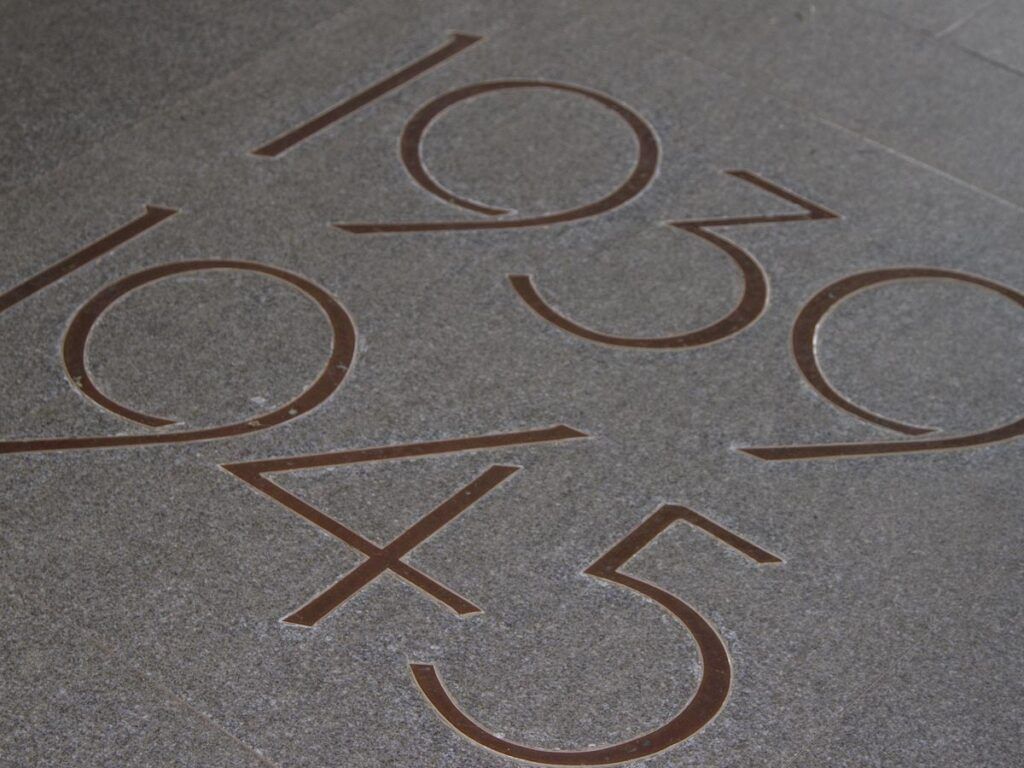
Airborne Museum in Sainte-Mère-Église
Just 15 minutes from Orglandes, this museum commemorates the American paratroopers of the 82nd and 101st Airborne Divisions who landed in and around Sainte-Mère-Église on the night before D-Day.
The museum features authentic aircraft including a C-47 transport plane used during the actual operation. You’ll find personal items, weapons, and equipment used by paratroopers alongside immersive exhibits that recreate the sights and sounds of the airborne assault.
Don’t forget to look at the church across the square where paratrooper John Steele famously became caught on the steeple during the drop. The town maintains a parachute and mannequin on the church to commemorate this event that was featured in “The Longest Day” film.
Why It’s Worth Visiting
The Orglandes German War Cemetery offers a unique perspective on World War II history that many travelers overlook. With over 10,150 German soldiers laid to rest here, it stands as a powerful monument to the human cost of war.
Visiting this cemetery provides a moment for quiet reflection. Unlike the more crowded American cemeteries, you’ll find a solemn atmosphere that allows for personal contemplation.
The site tells stories of individual soldiers. As one visitor mentioned, guides sometimes highlight specific gravesites and share the personal histories of those buried there, giving faces to the statistics of war.

It’s an important counterpart to Allied cemeteries in Normandy. To understand the full historical picture of the D-Day invasion and subsequent battles, you need to see both sides of the conflict.
The cemetery’s design and maintenance reflect respectful remembrance. The grounds are well-kept, creating a dignified final resting place regardless of which side these young men fought for.
You’ll gain a more balanced understanding of World War II. War cemeteries remind us that loss affected families on both sides of the conflict.
It’s easily incorporated into your Normandy itinerary. As you explore the landing beaches and memorials, Orglandes provides an important historical complement that deepens your appreciation of this pivotal moment in history.

